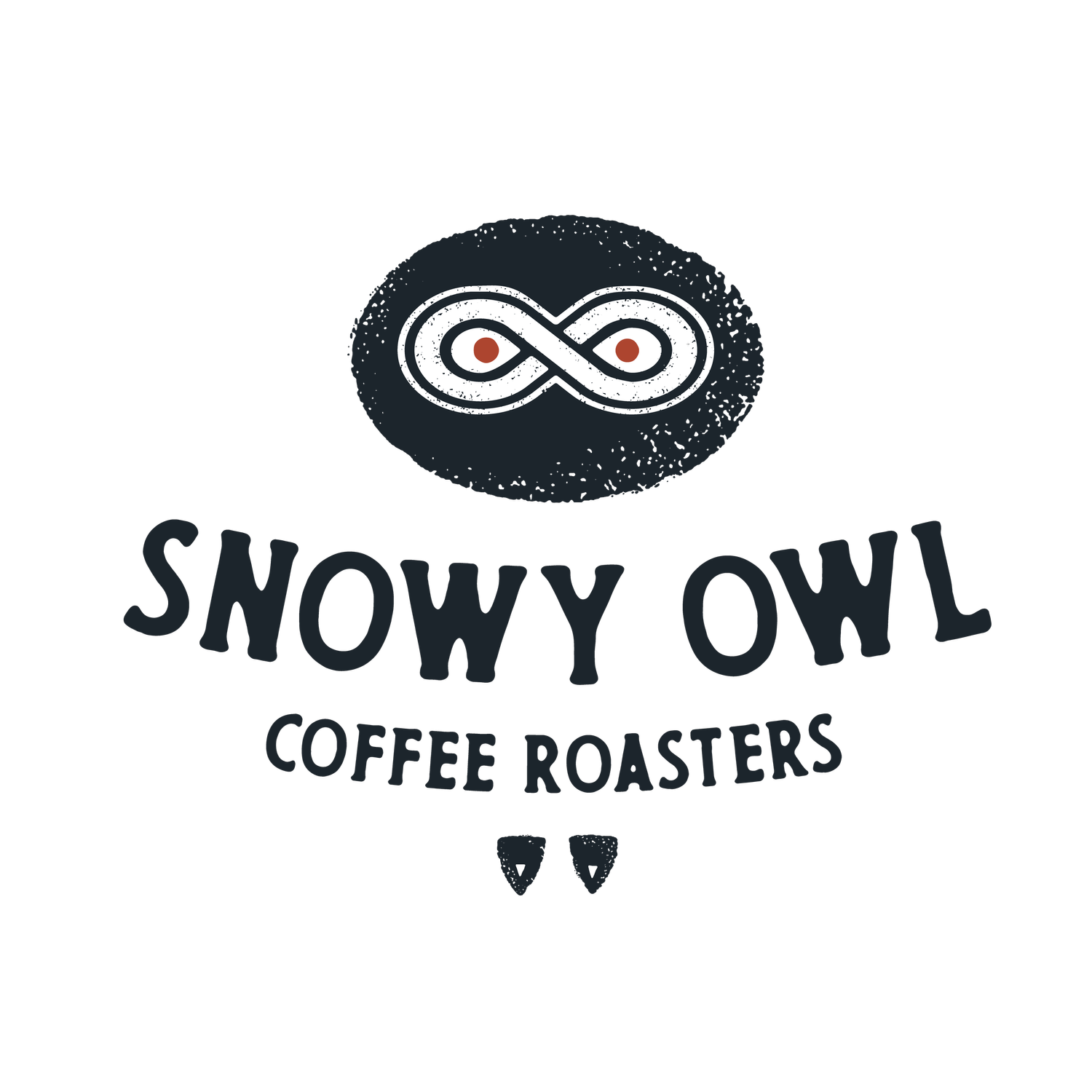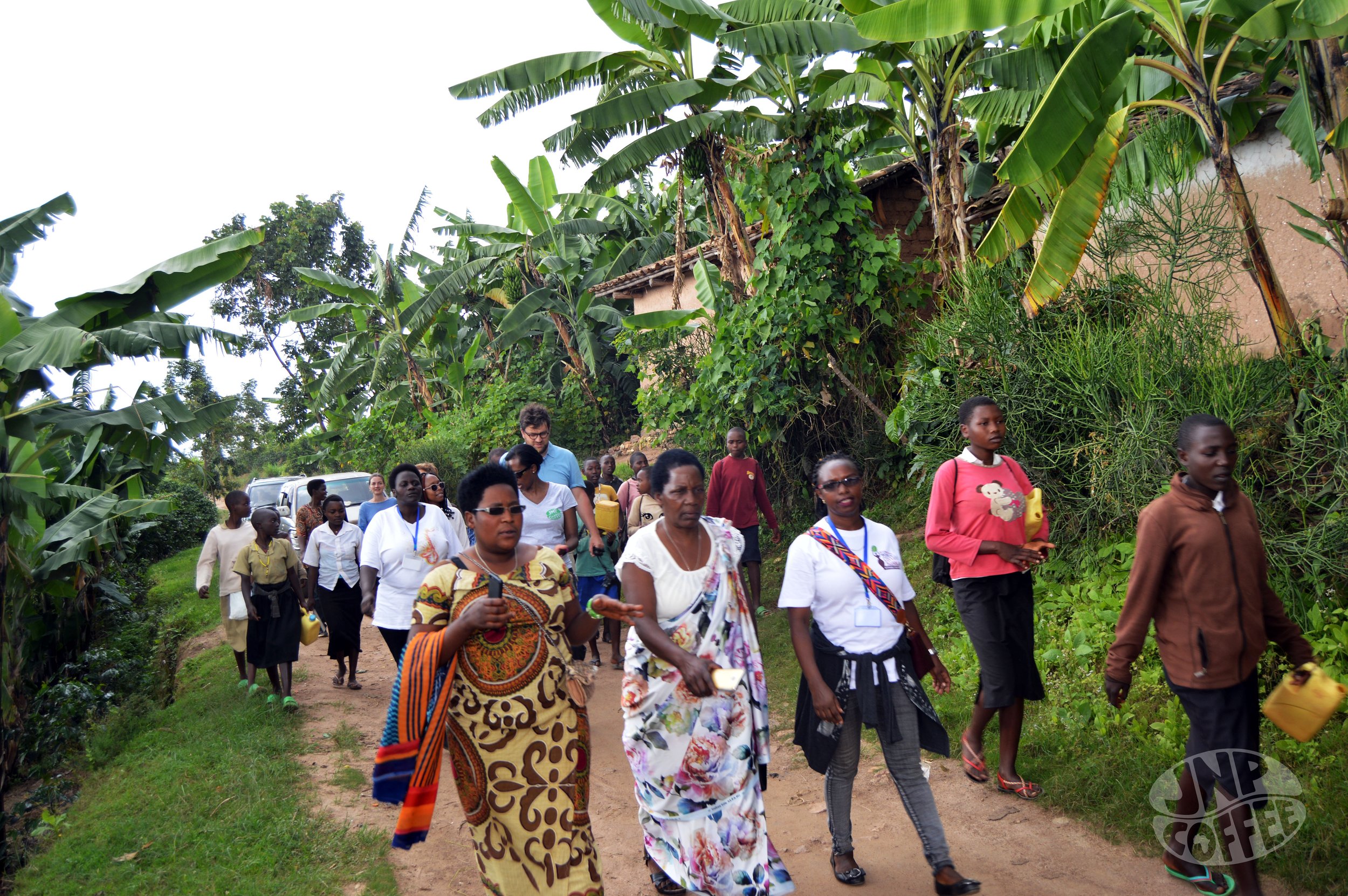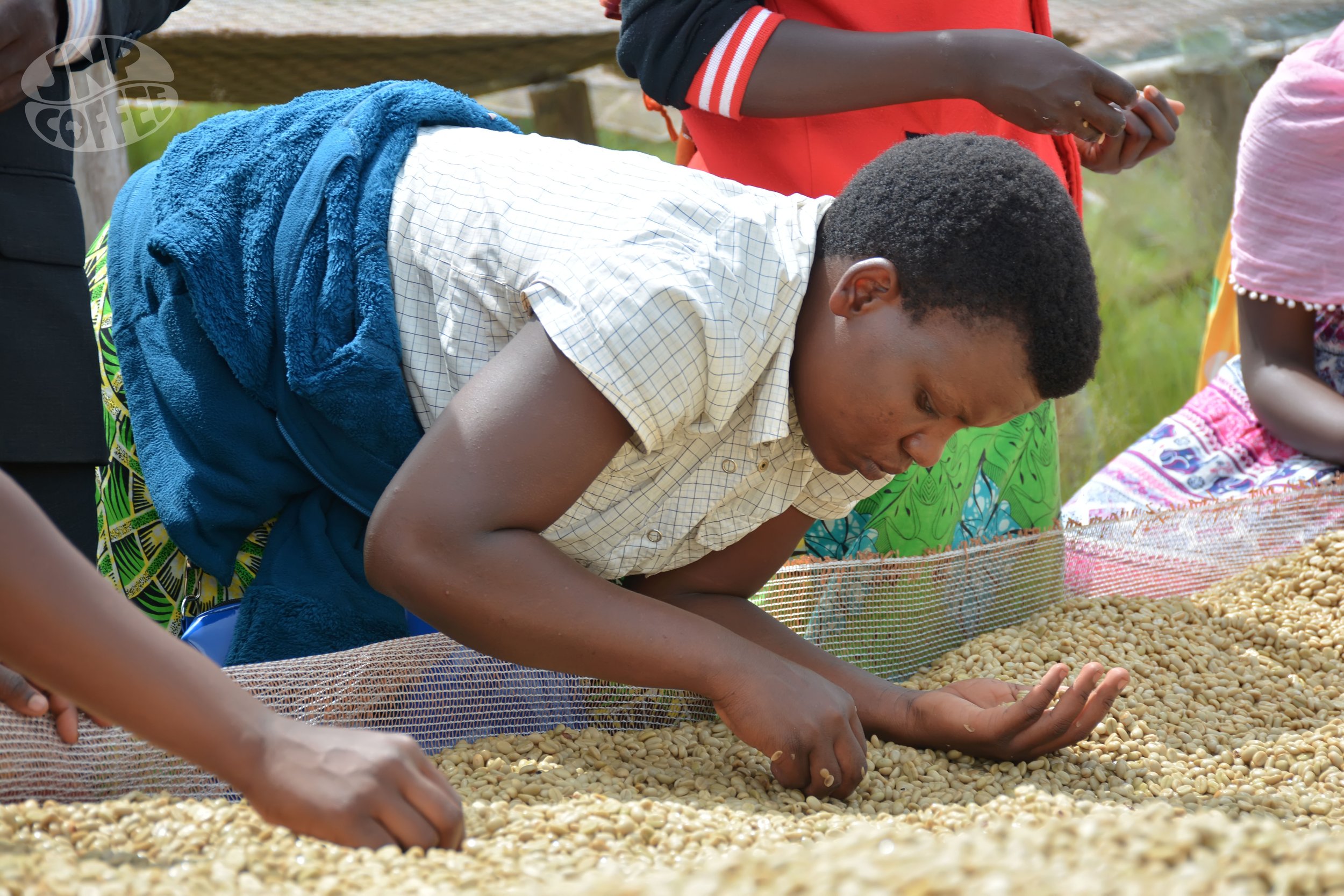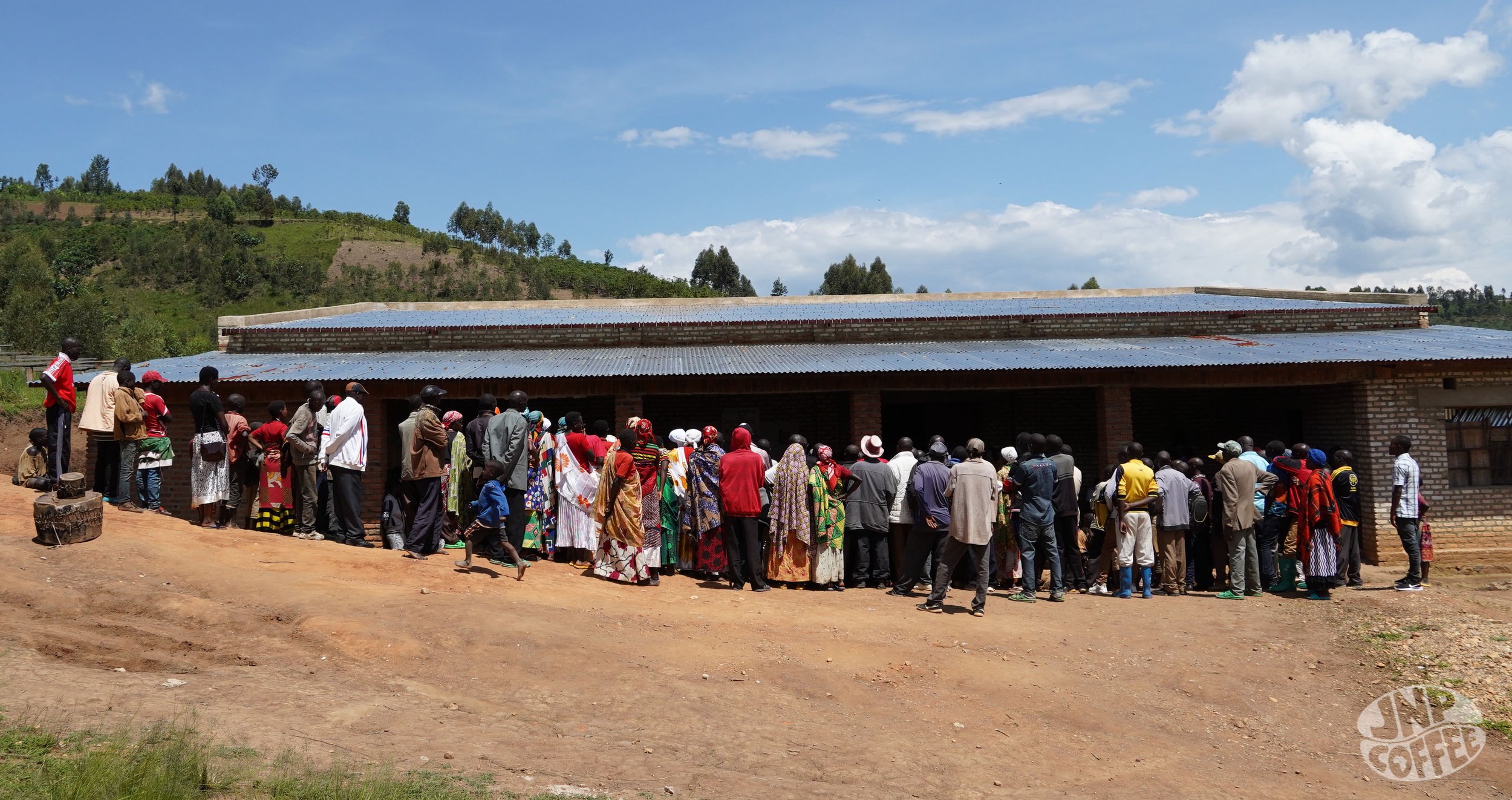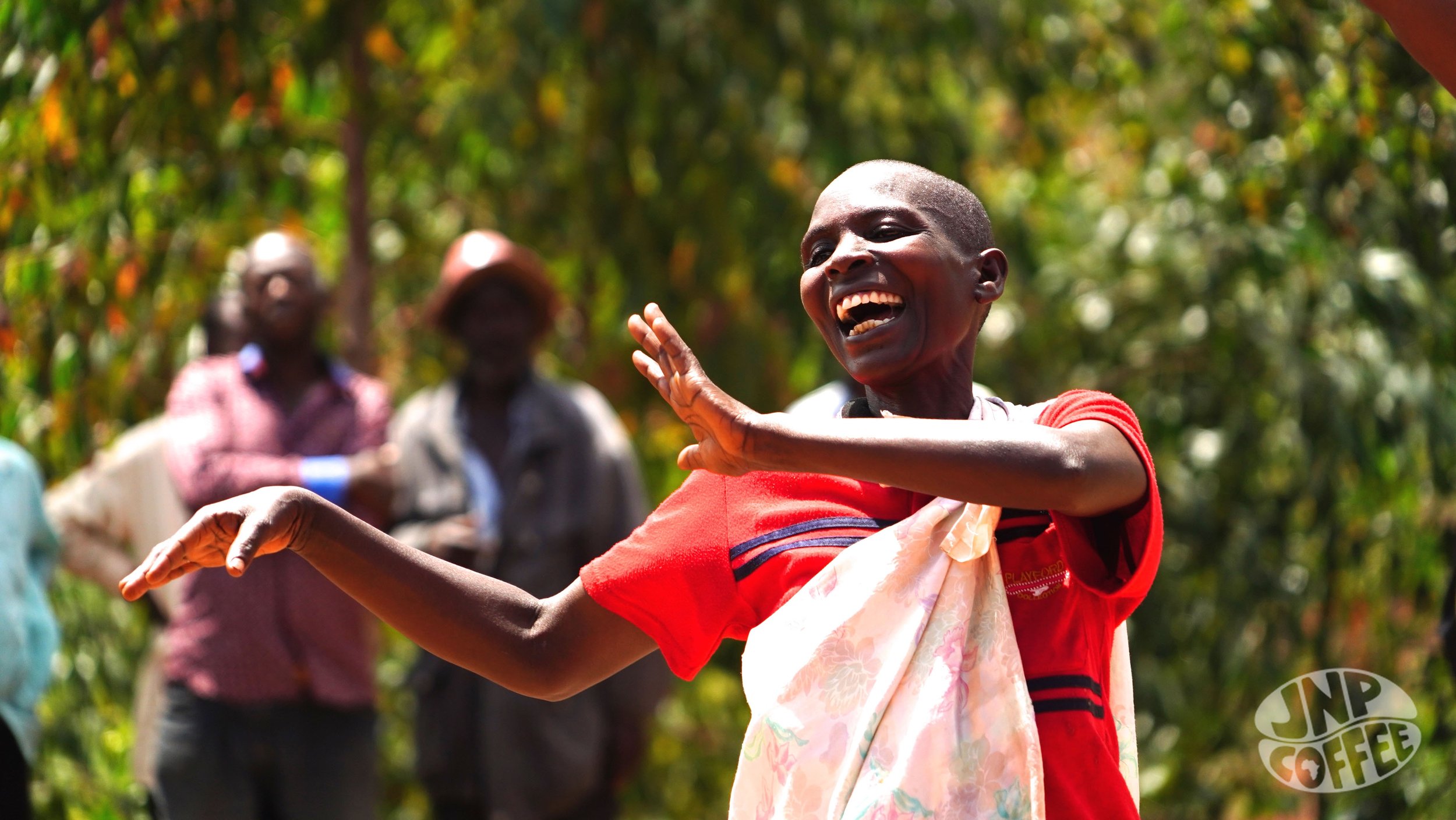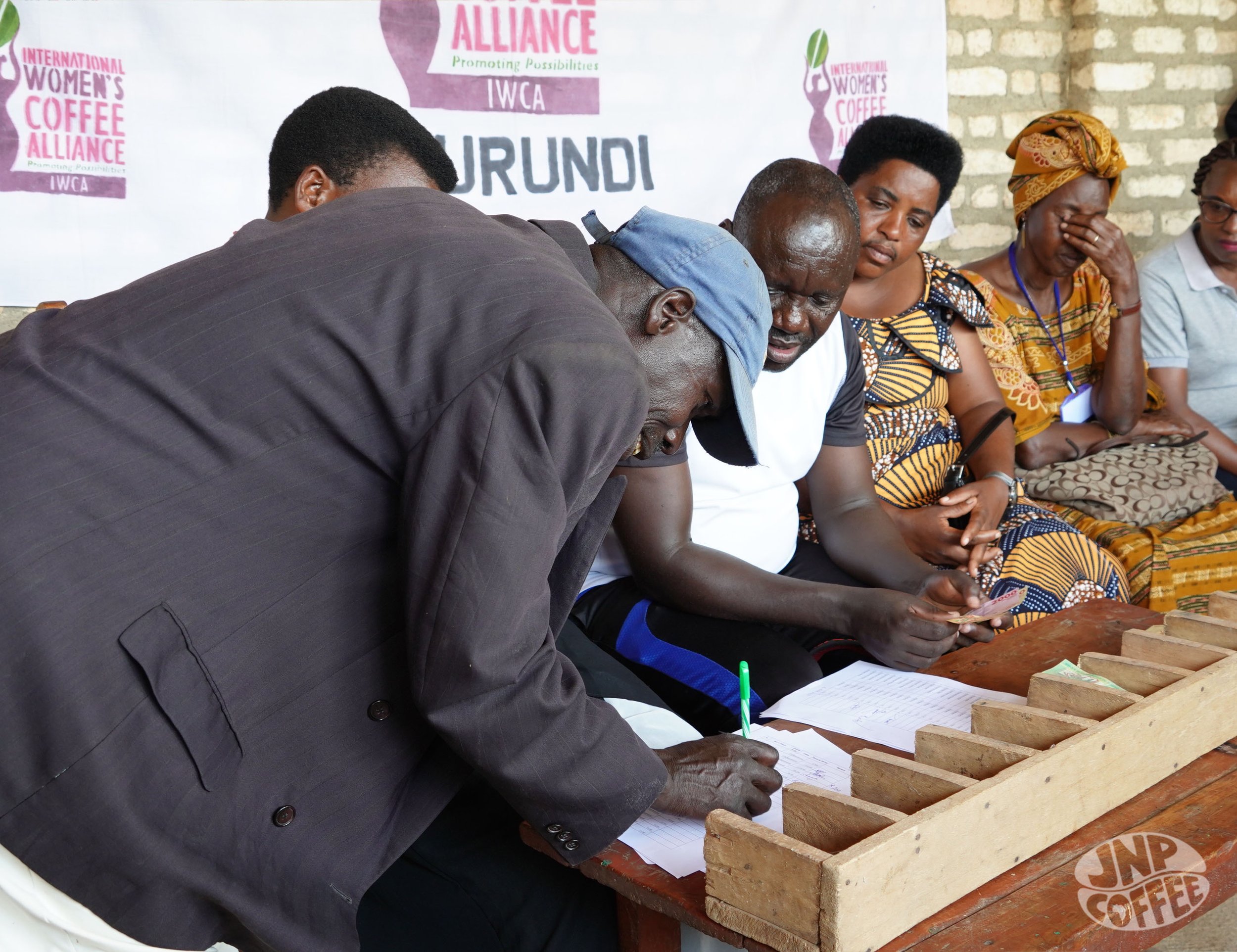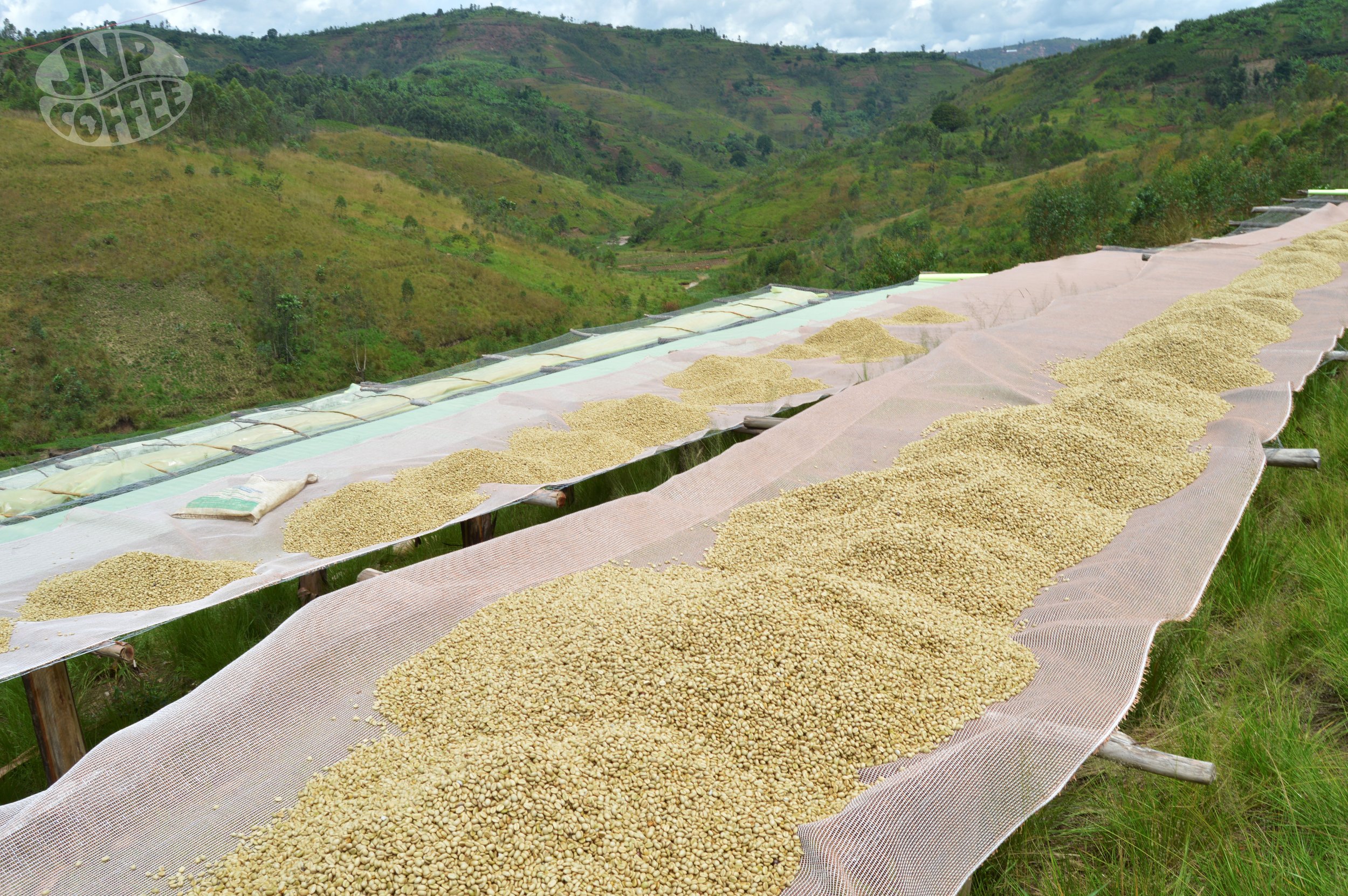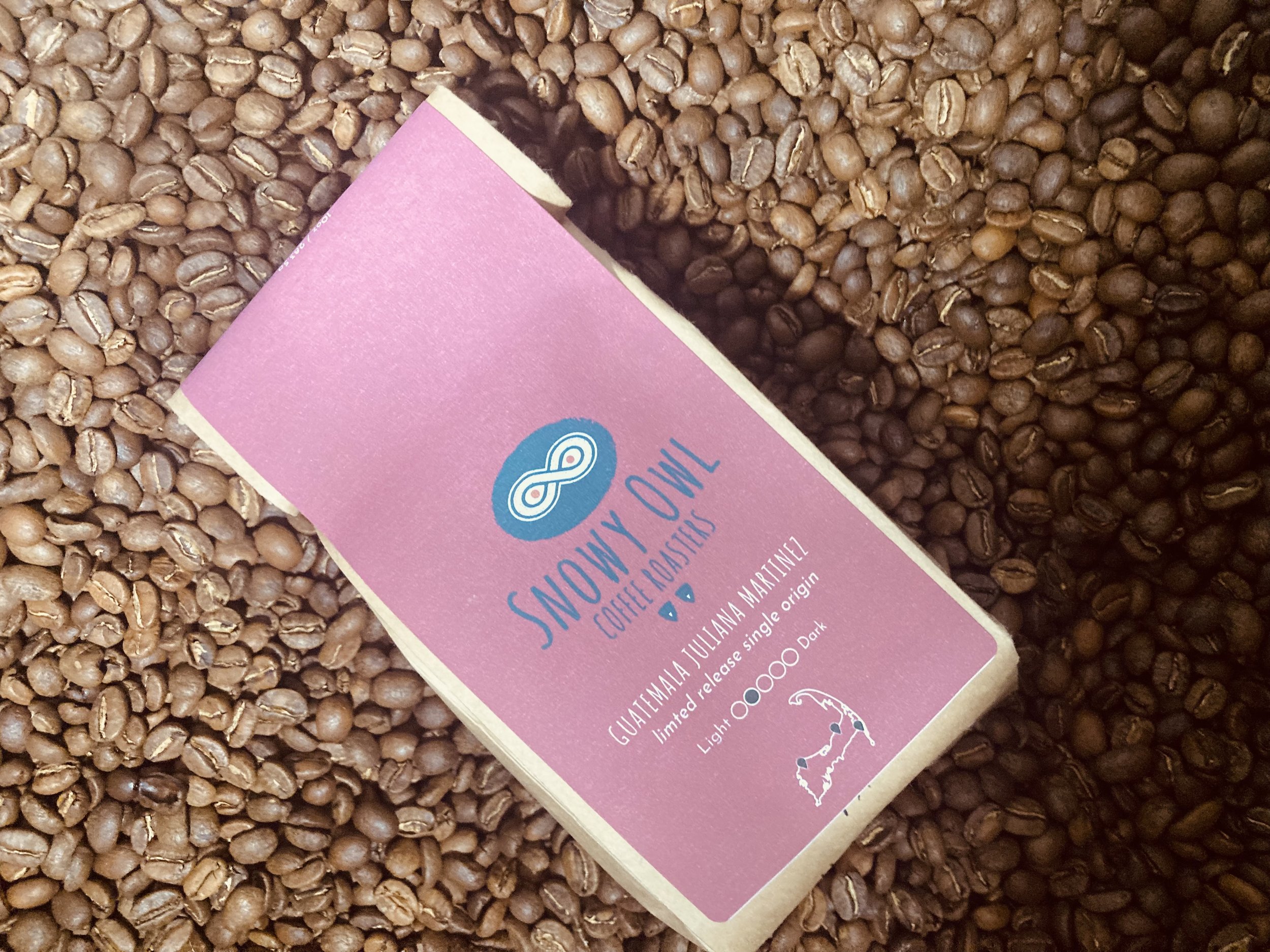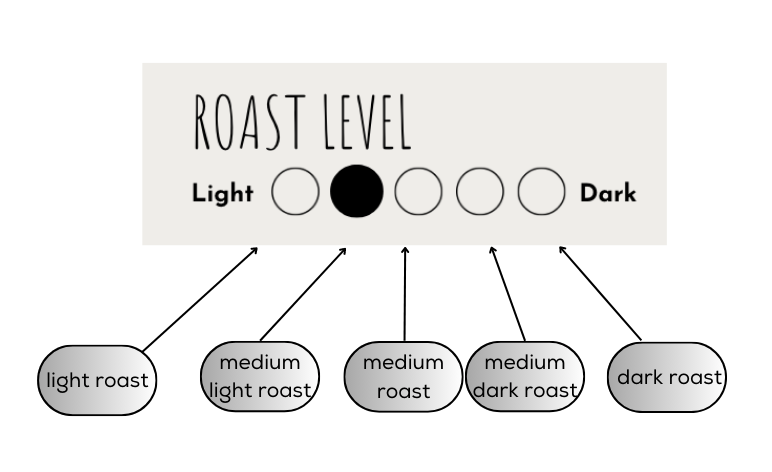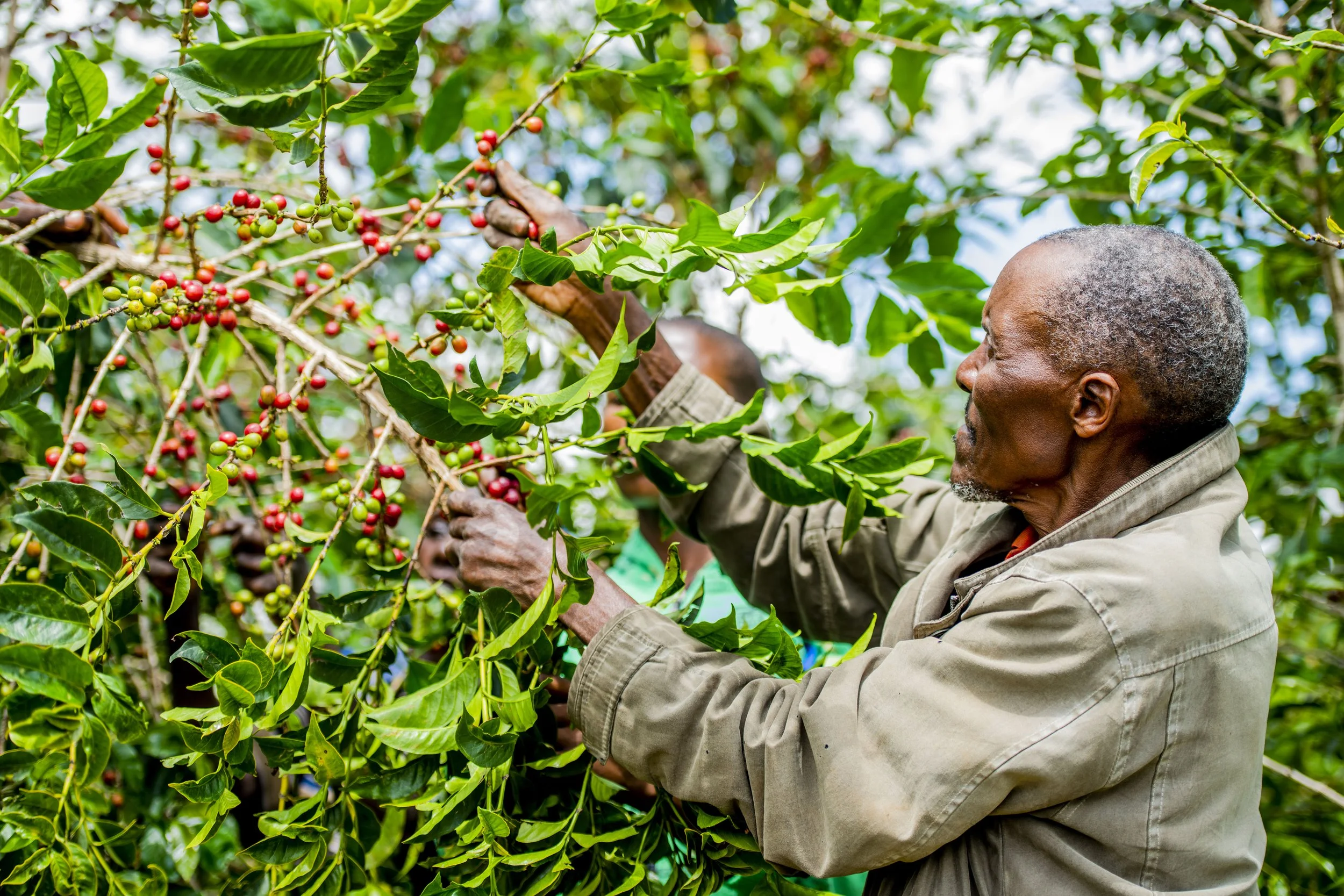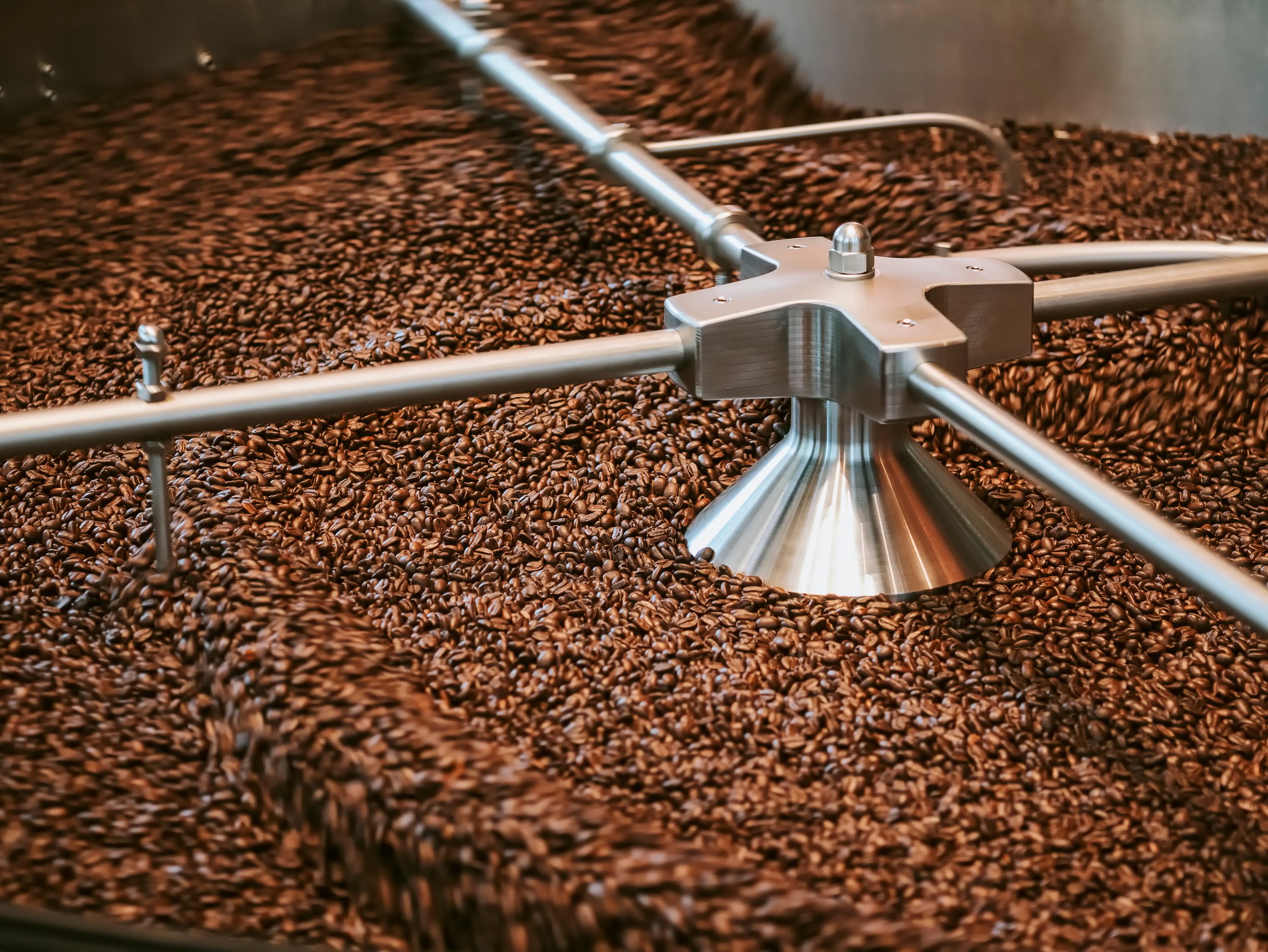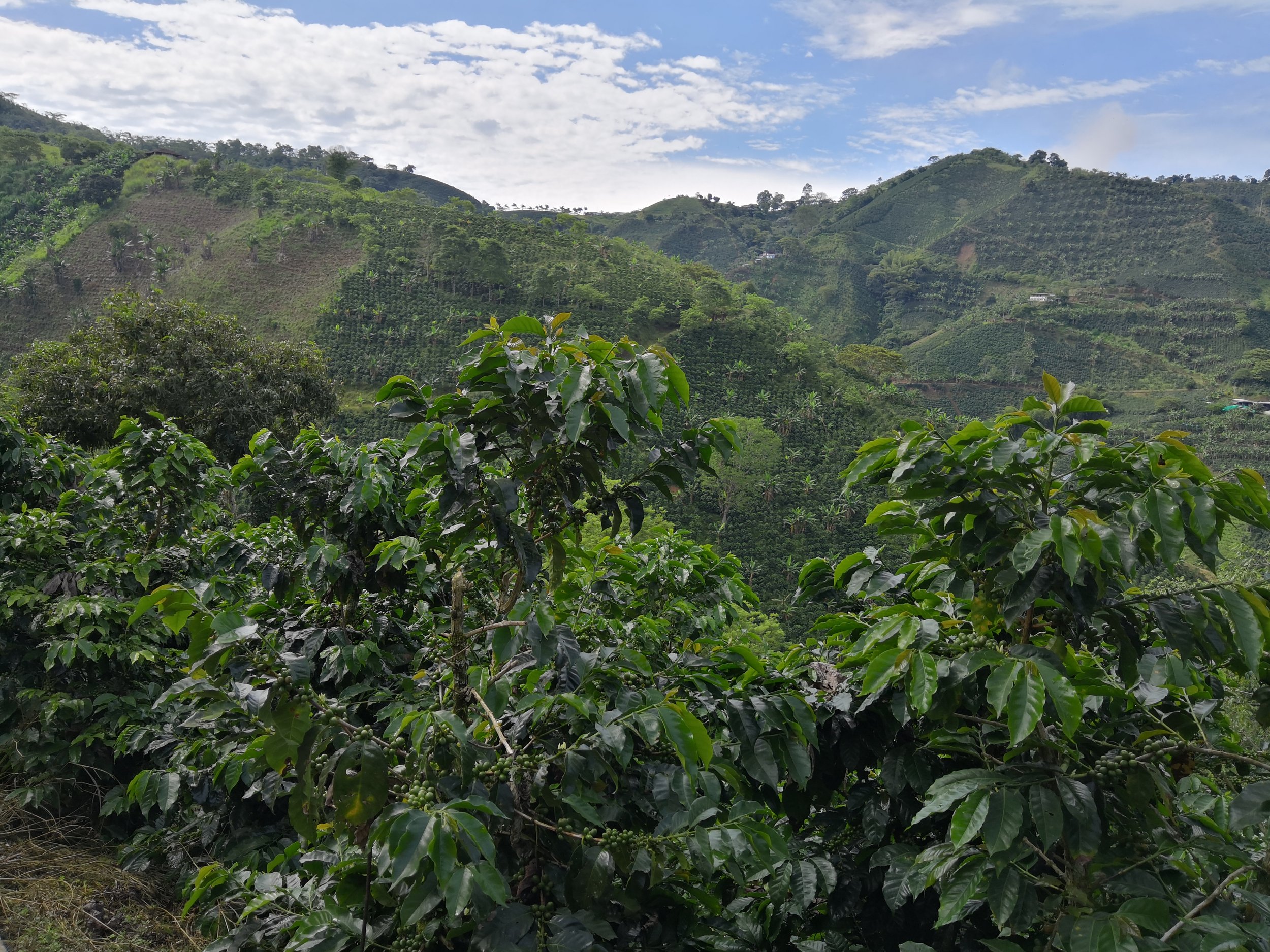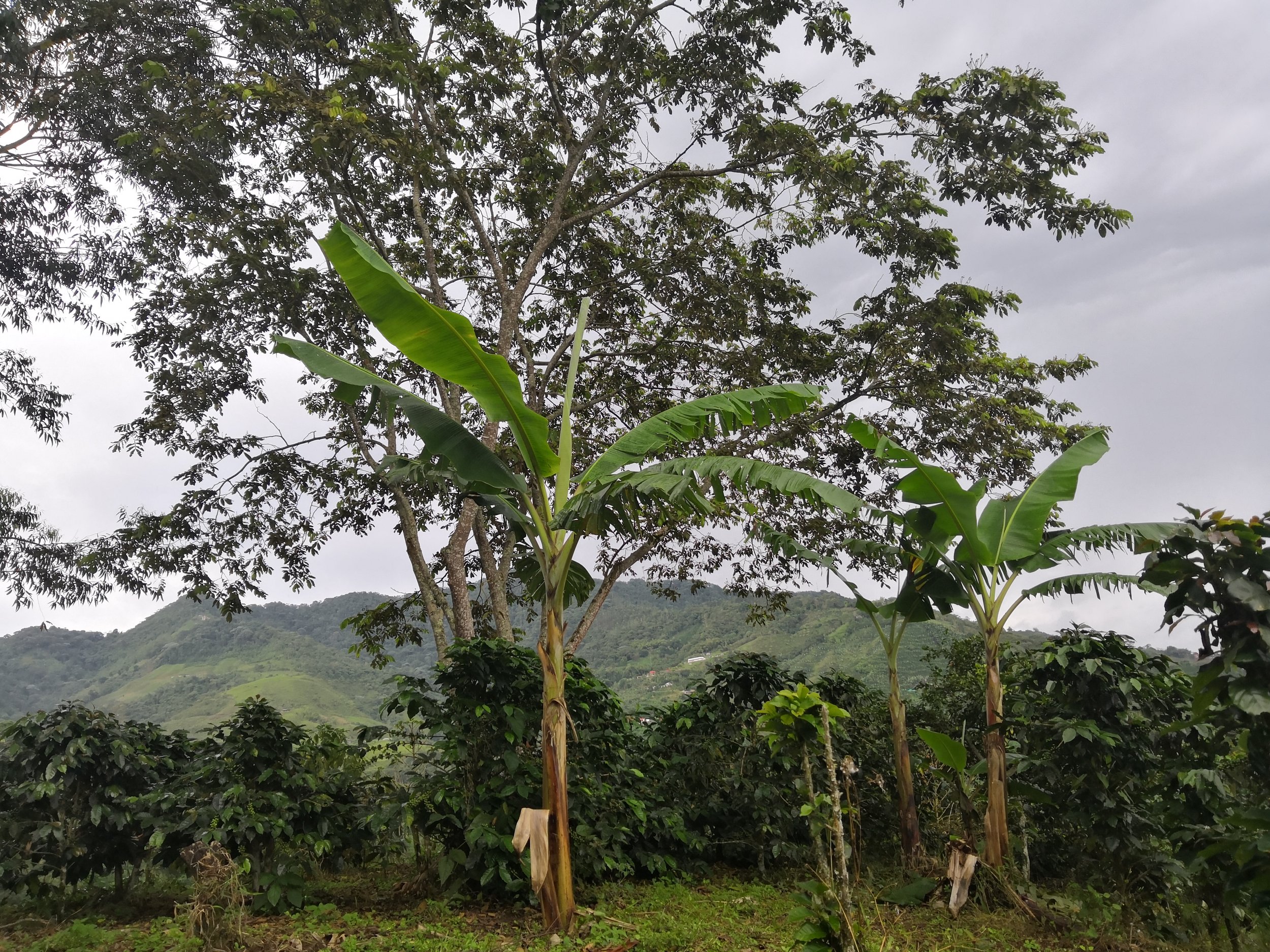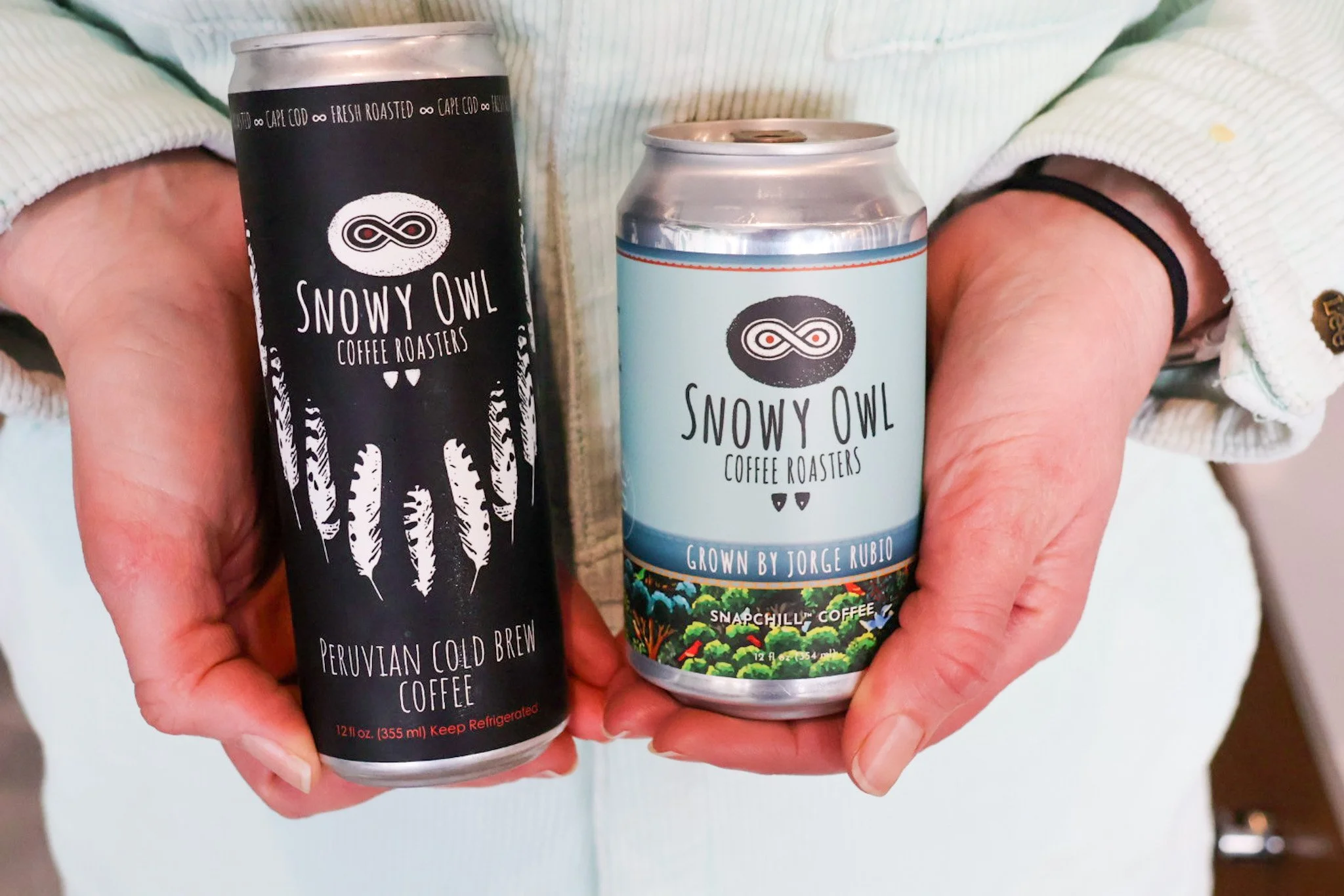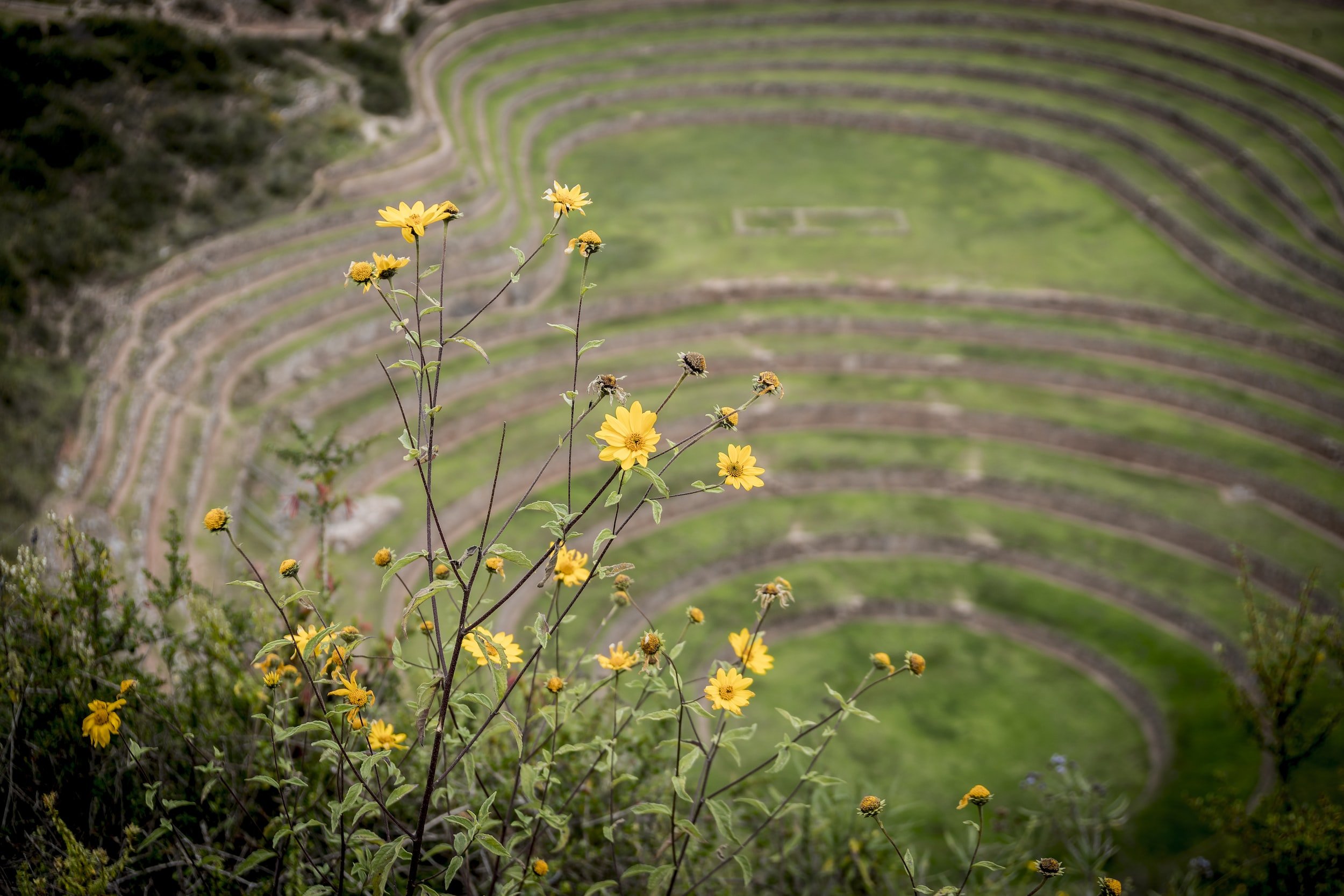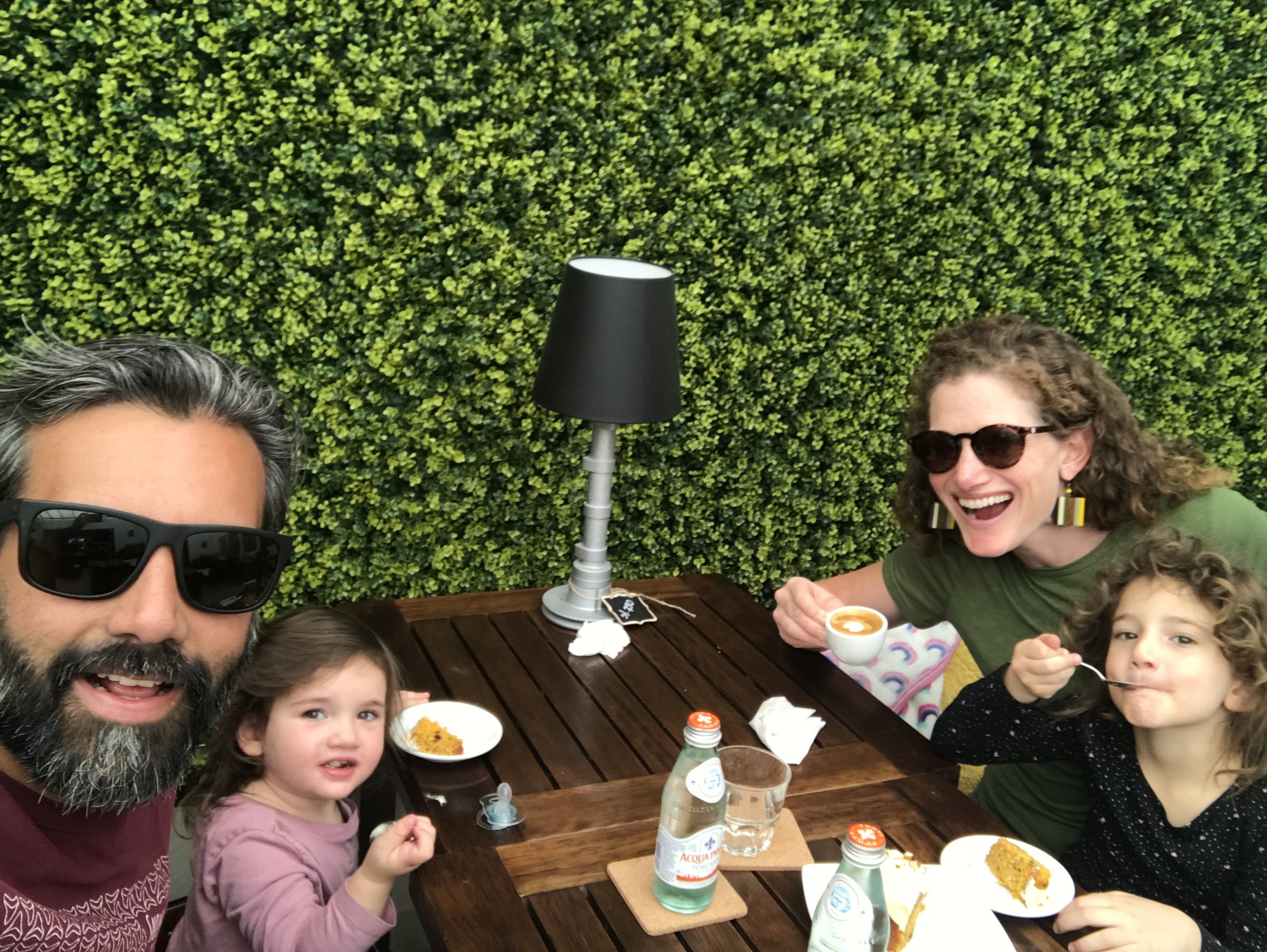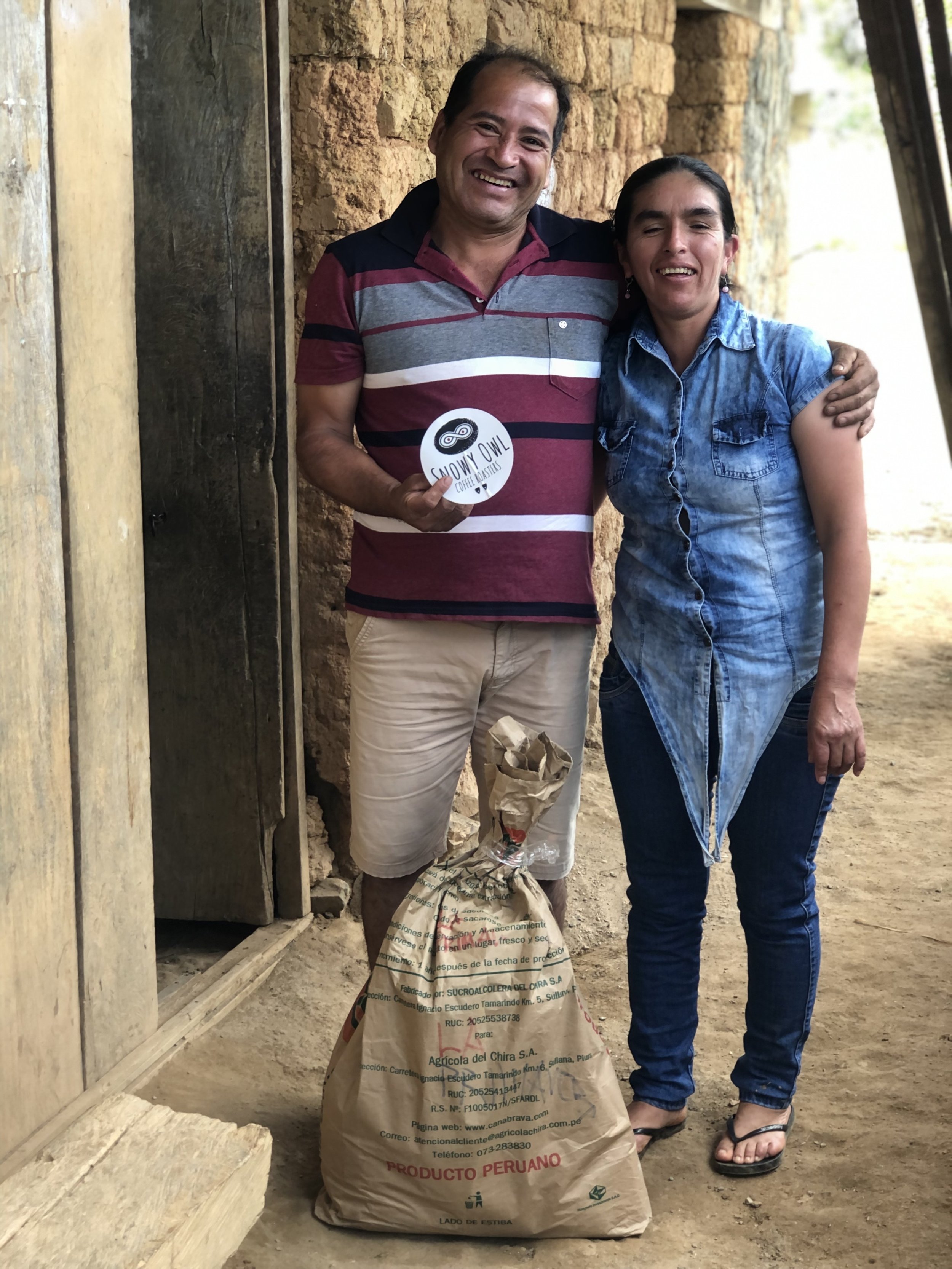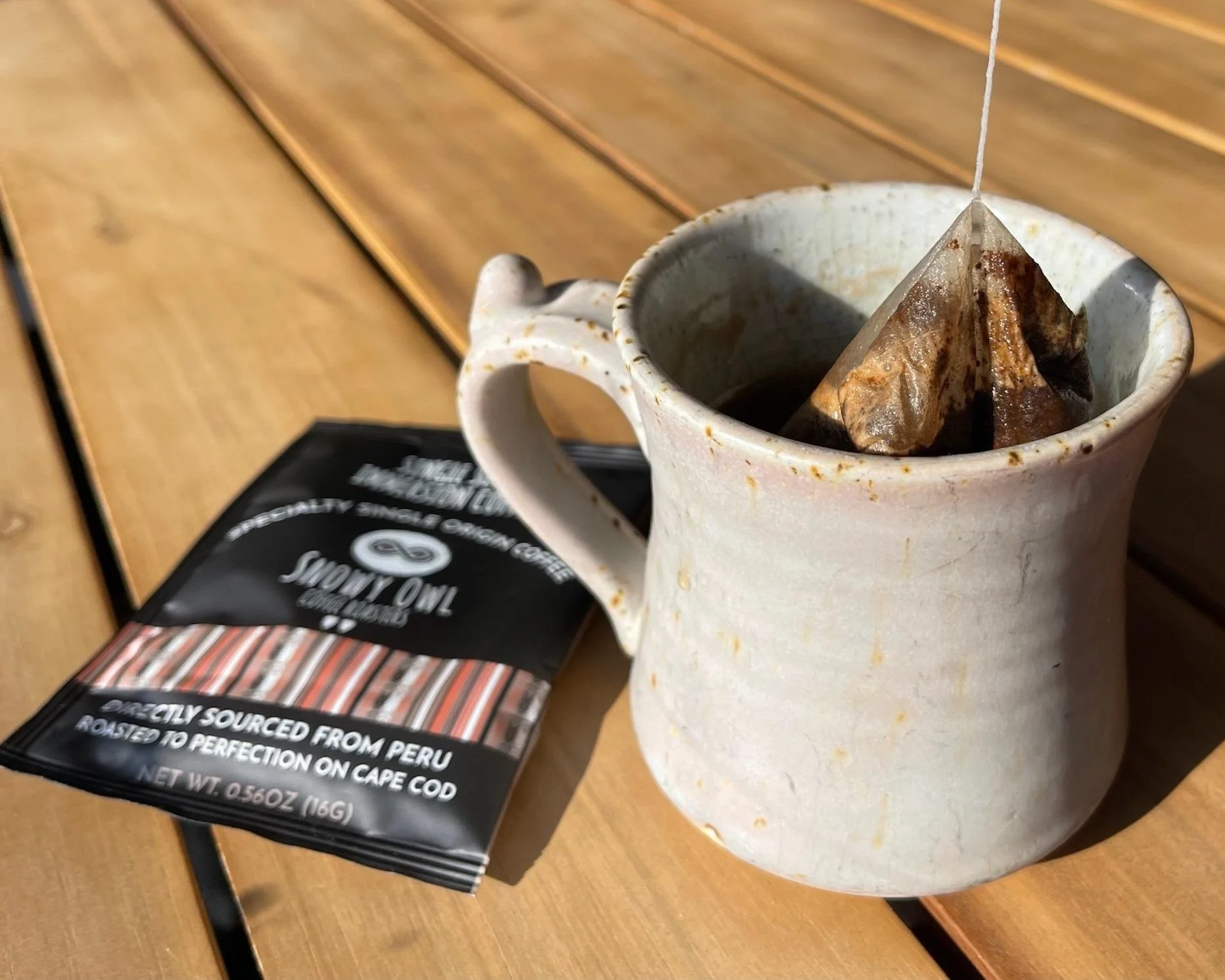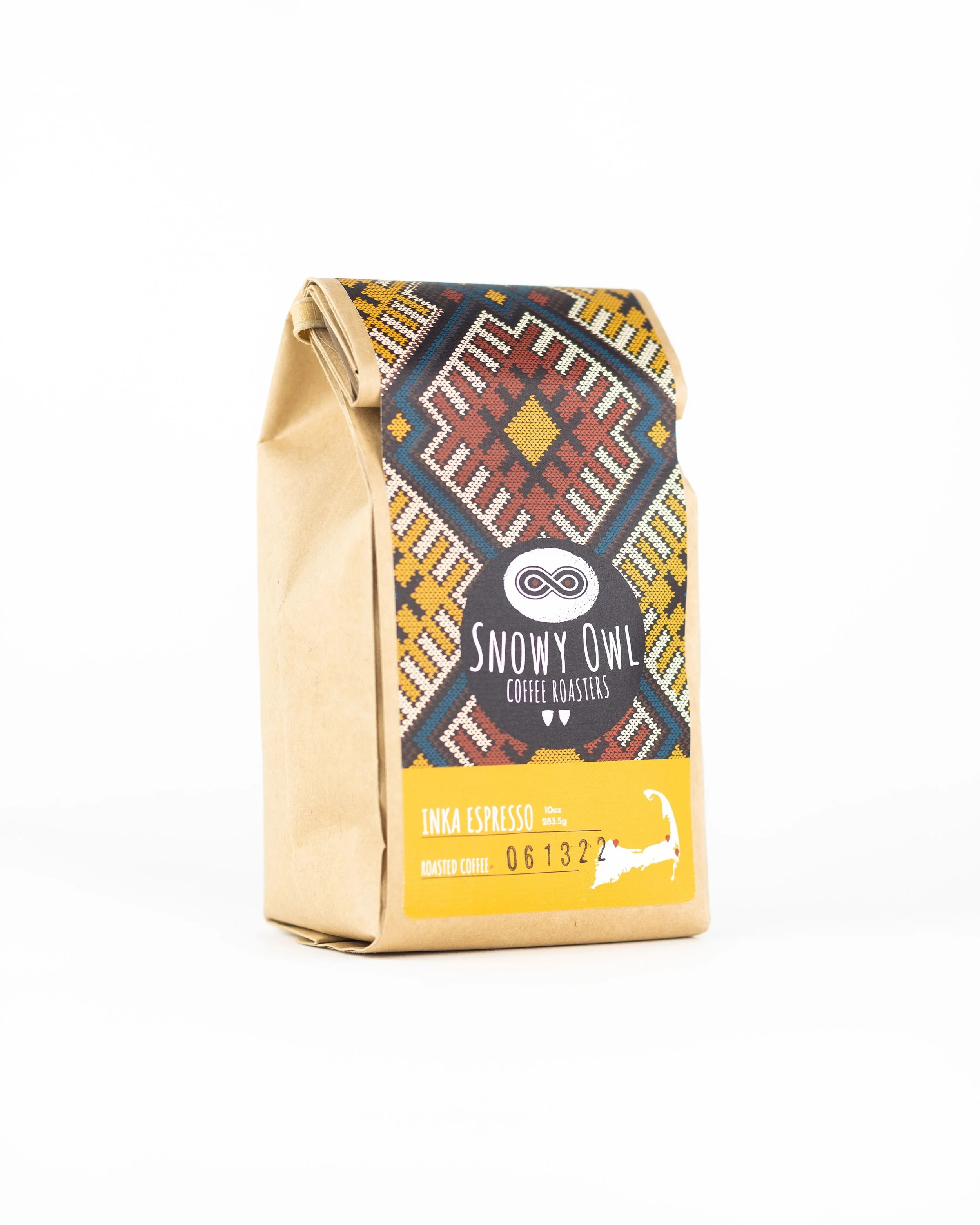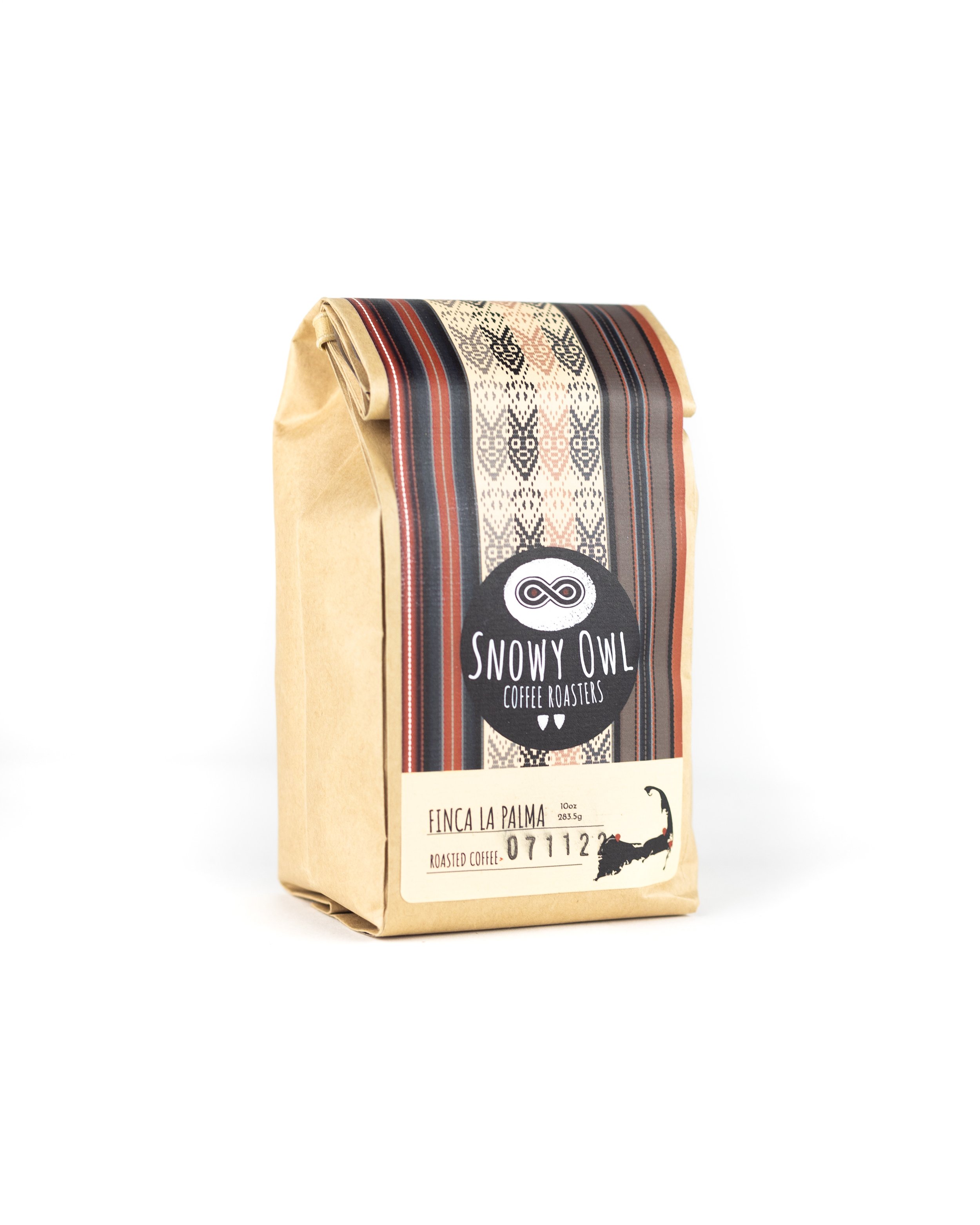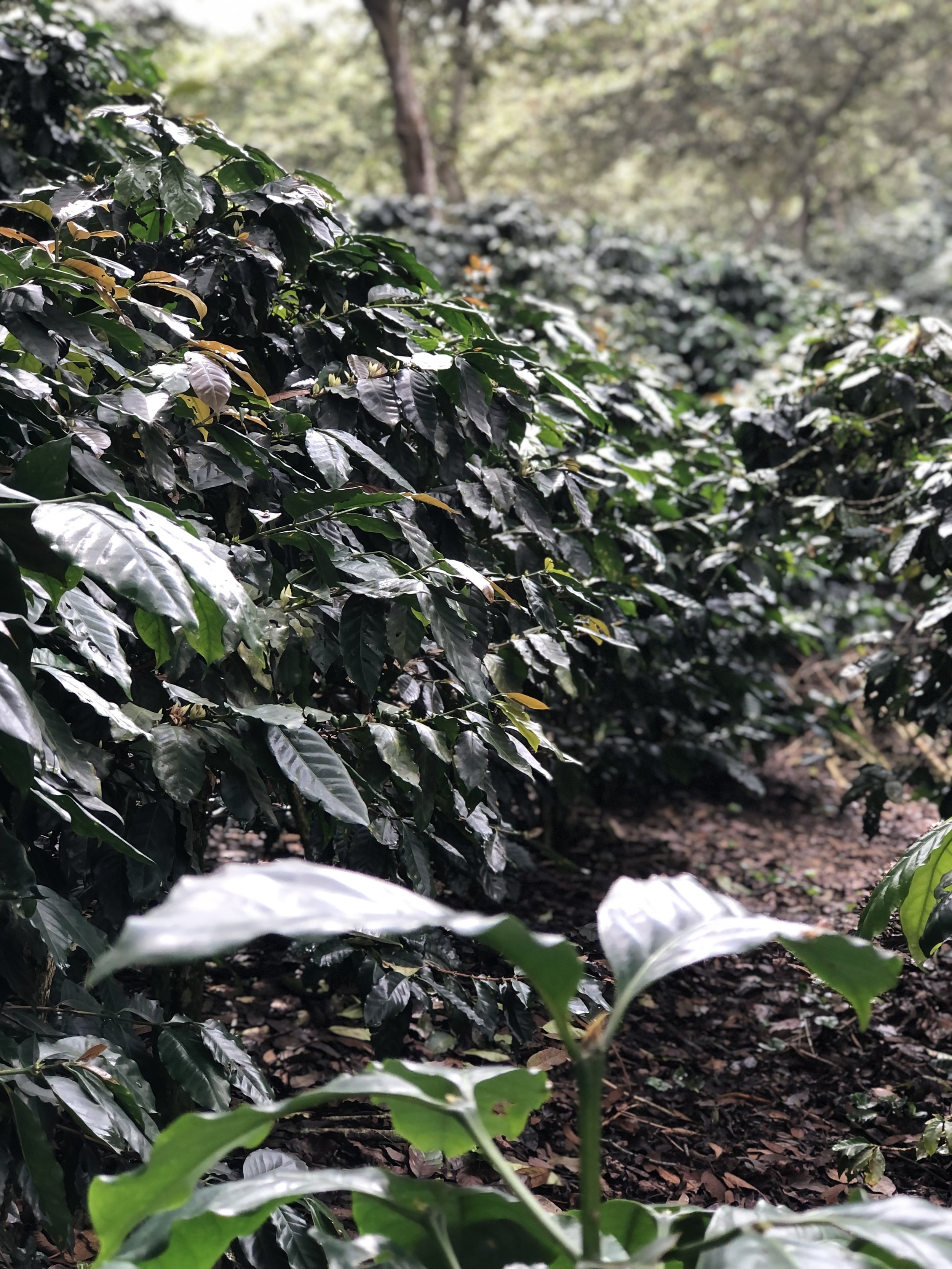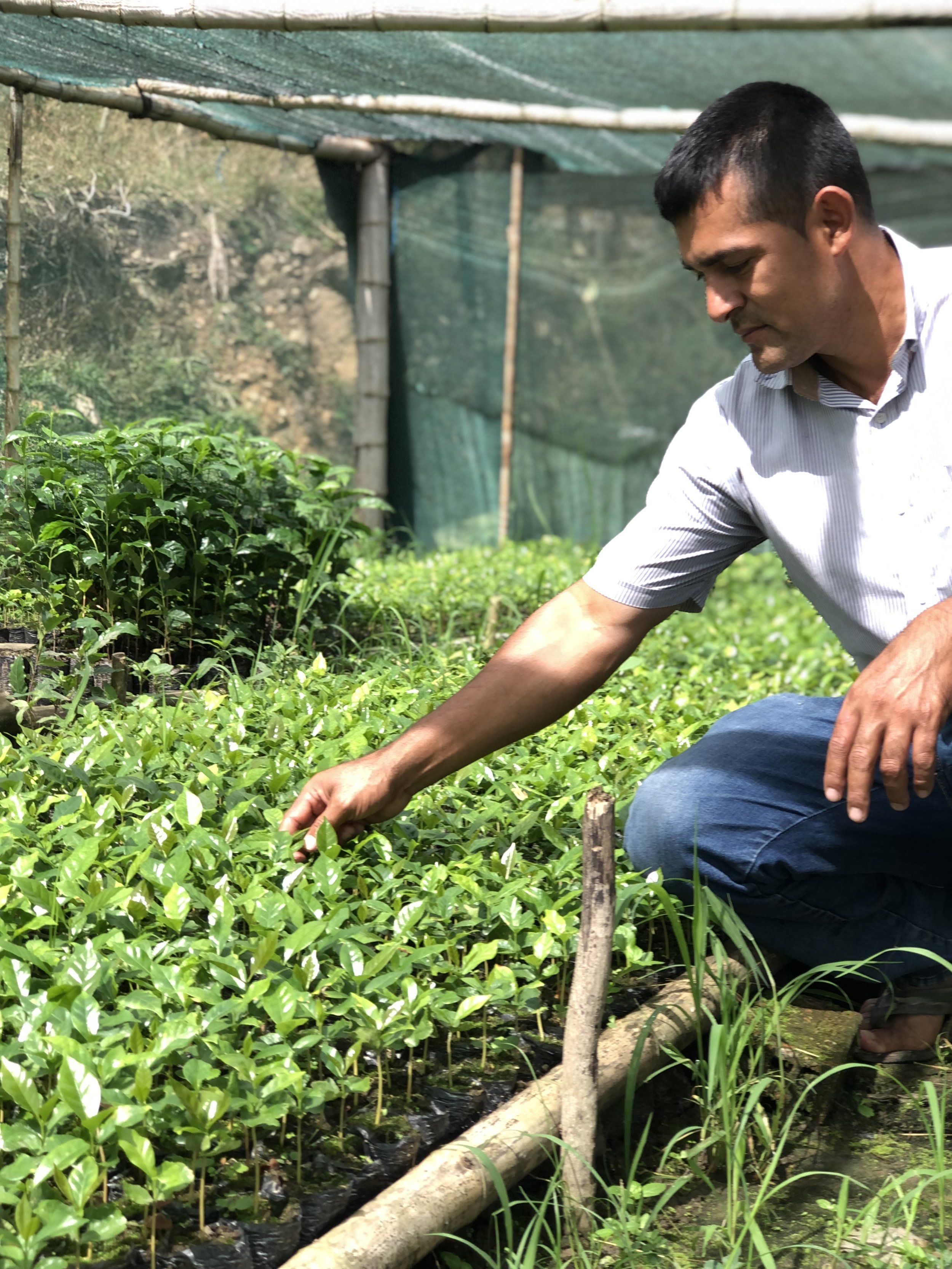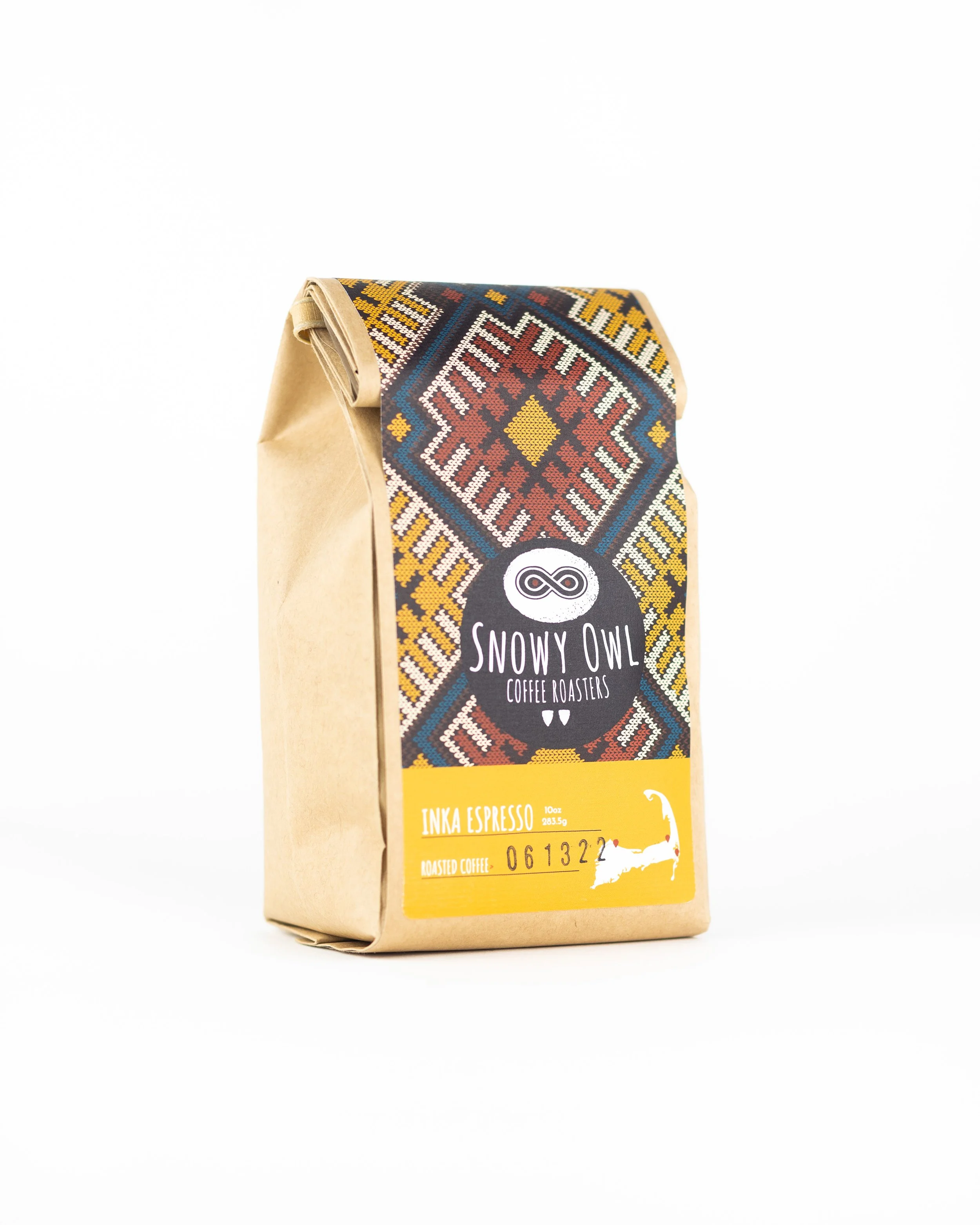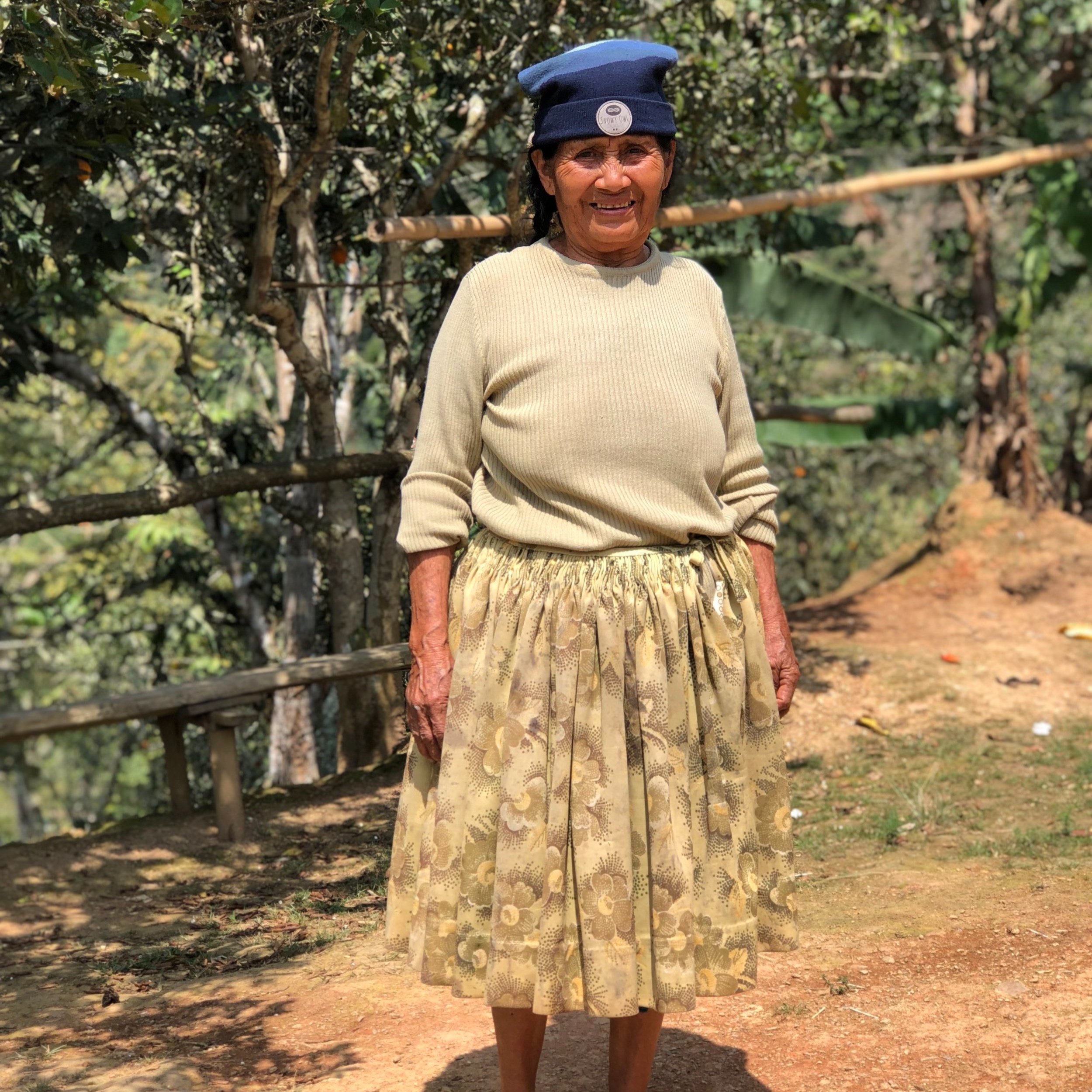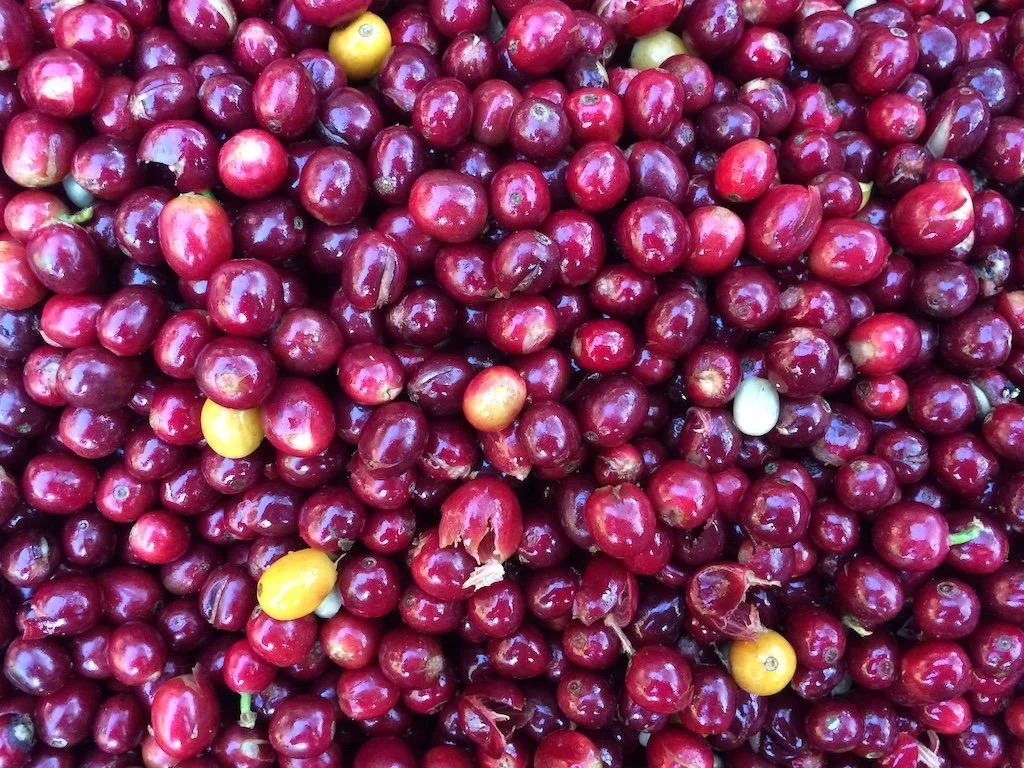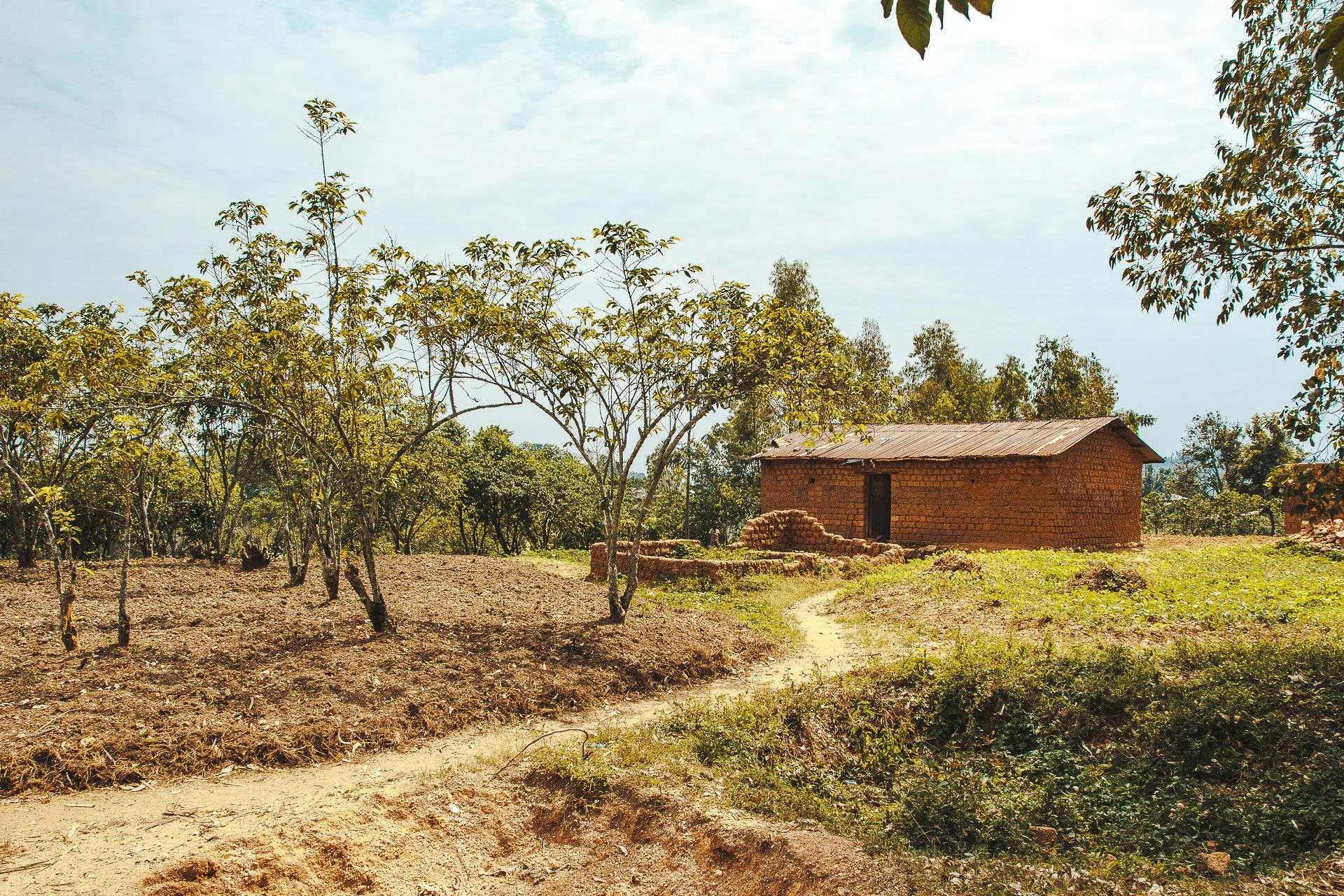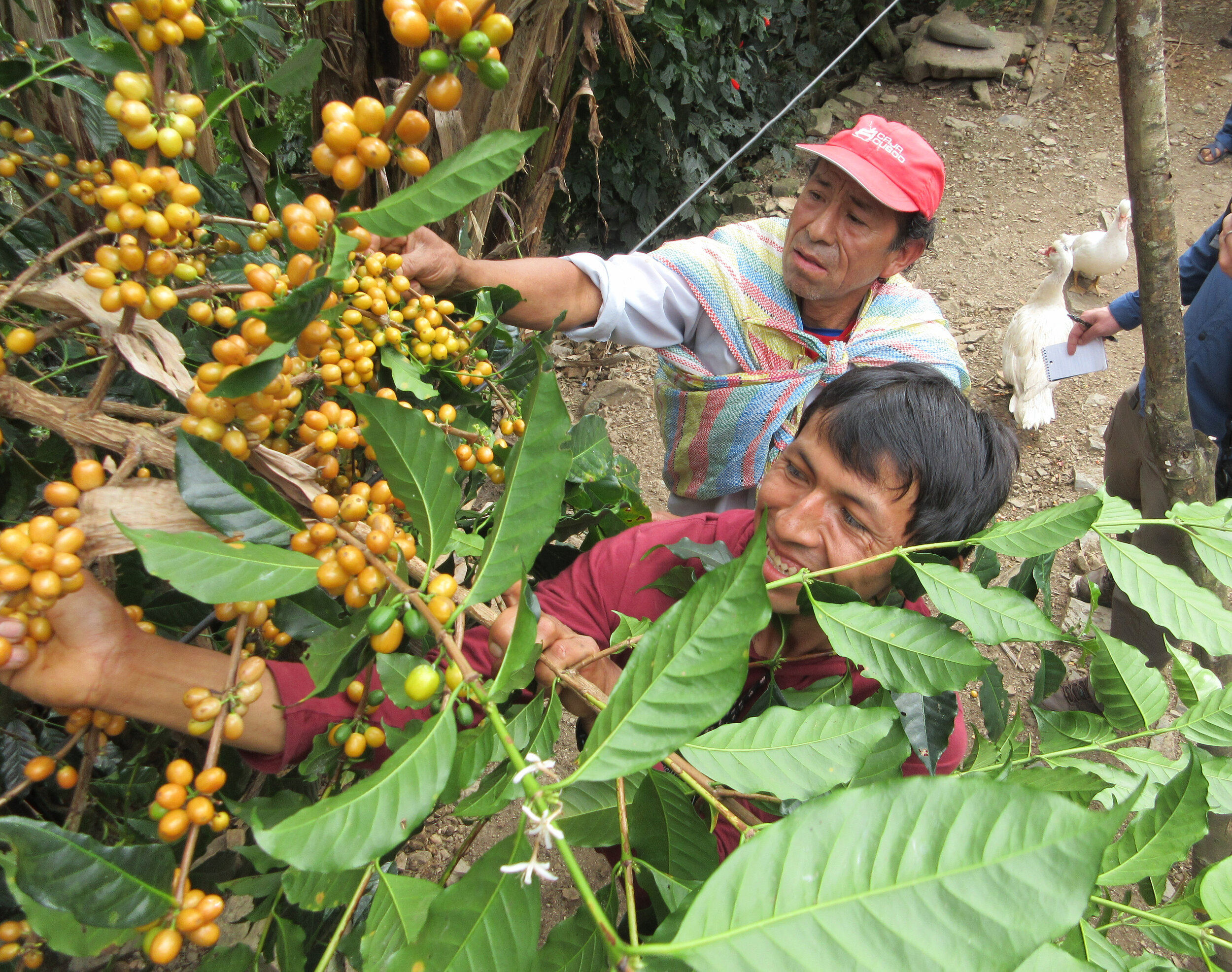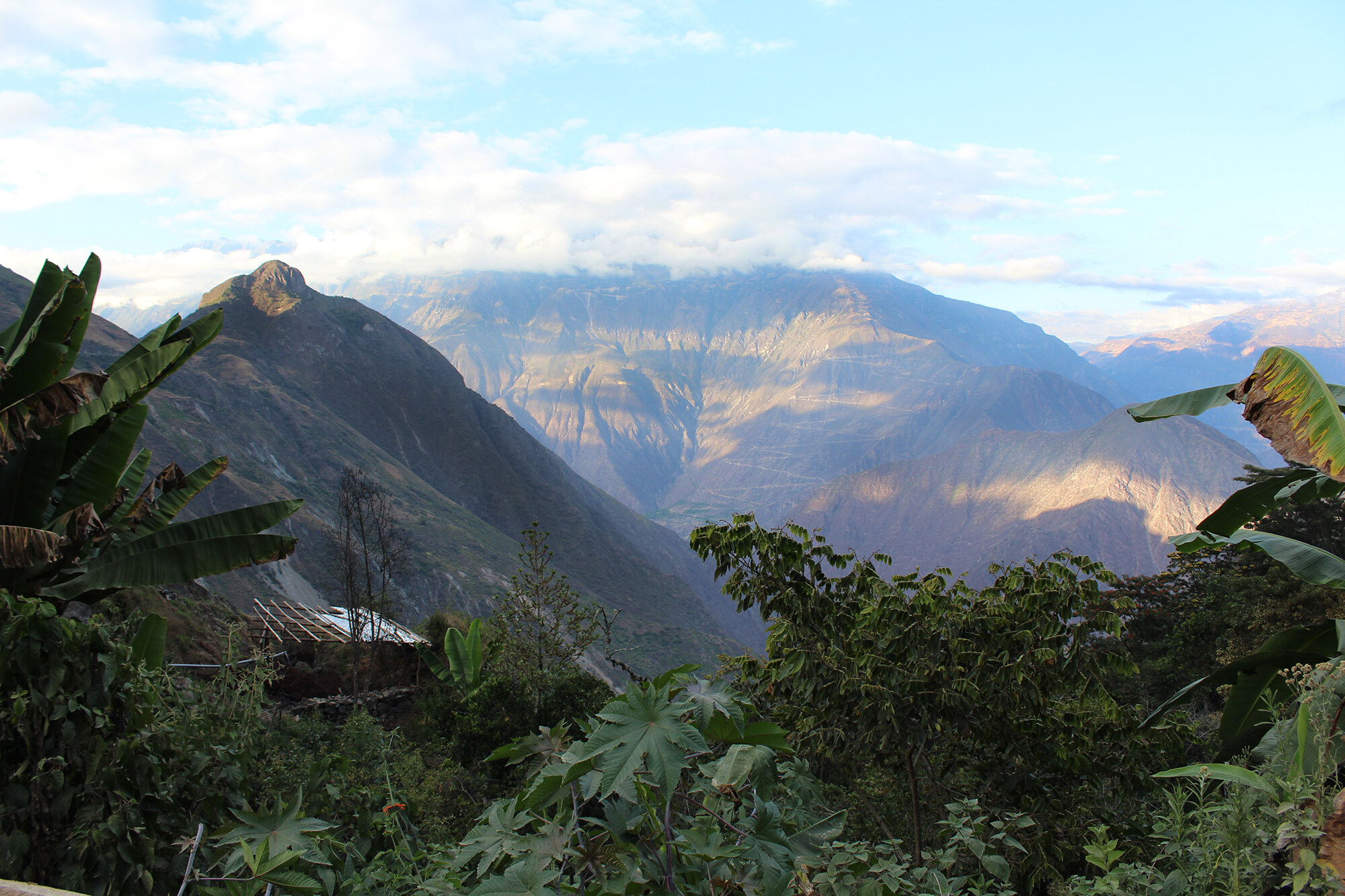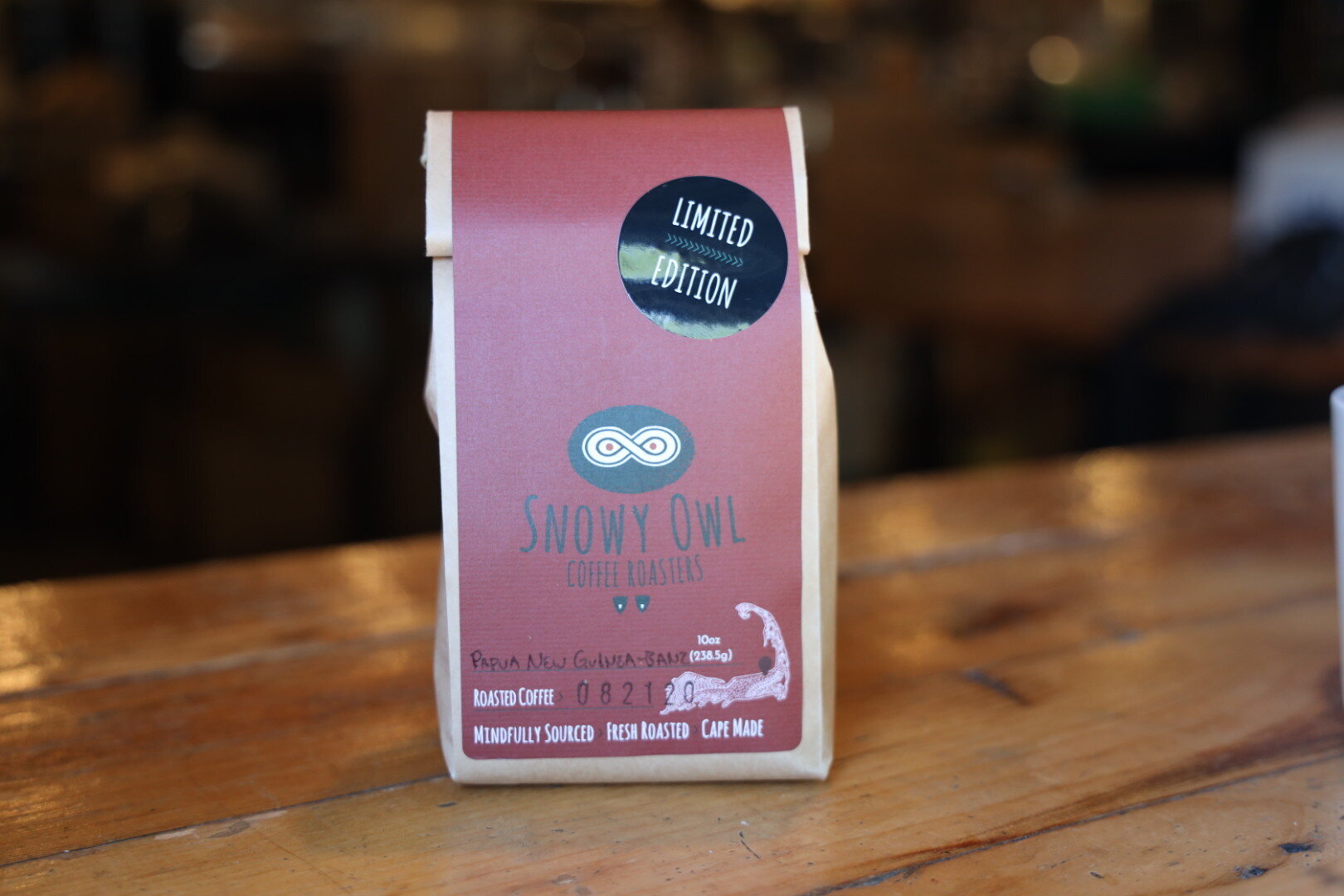Burundi Turihamwe - a Photo Journey
Enjoy these stunning photos from JNP Coffee, showing the Turihamwe community processing their coffee and receiving their premiums from previous harvests.
The color in your cup
Deciphering our labels and roast level
Our labels have gotten a makeover
You might have noticed our coffee bag labels are looking slightly different. We have been working with our wholesale team and QC department to communicate even more to our customers in regards to our medium roast approach. Decipher our coffee bags with us as we explain the making of our coffee roast scale.
We understand that coffee color, and roast level are very important to consumers. Why? Because coffee consumers associate color with quality and flavors, where their preferred coffee can vary from light to medium to dark roasts.
Knowing there is quite a range in the spectrum of roast profiles, we chose to specialize in medium roast profiles. With a medium roast profile, we believe we can offer many different flavor profiles, while still maintaining a level of taste of place (origin) in the cup.
This blog aims to be very transparent to our customers about our offerings, how we classify our coffees, and how you can best choose an offering to suit your liking.
Why measure roast color
However, despite the fact that the color of coffee is an important indicator of roast level and quality, our understanding and measurement has been predominantly subjective. It isn’t uncommon to see coffee bags labeled light or medium, when in fact they don’t fall into that category.
Standards can be a great tool for the coffee industry as they are trusted instruments established by knowledgeable subject-matter experts. The Specialty Coffee Association or SCA creates quantifiable and qualifiable measures based upon scientific testing which sets values and ranges for coffee. These standards have been established to cover all aspects of coffee processing, including roast color.
Creating standards helps to make our measurements objective. In fact, we use our roast color measurements to drive our roast profile development, and to ensure we are continuing to roast to the desired outcome down the road. So, ultimately we use roast color as both a tool to maintain our quality standards, and as approachable language to describe our offerings.
How to measure roast color
In this instance, the coffee industry looks to the Agtron Scale, which uses infrared light to determine roast degree. Using this scale, the higher the number, the lighter the roast. The challenge with using the Agtron scale directly is it’s very expensive and not accessible for everyone.
Importers, producers, and roasters alike have turned to a color meter called Espresso Vision. The espresso vision color meter uses a meaningful and intuitive output scale to translate directly to the Agtron scale, as shown below.
Our quality control team measures and records the roast level of all our offerings. The number of the roast color allows us to classify all our roasts within the medium roast spectrum, ranging from medium light to medium dark.
Our take on approachable coffee
You might stop here and think, why not present the roast level portrayed on the bag and move on?
Snowy Owl’s approach is rooted in meticulously preparing our coffees. We want our customers to know our processes first hand, and hope that along the way they can understand our quality standards and our inherit care. So, yes our labels have led to a pretty straightforward roast scale, but knowing there is science and data behind these scales helps too.
Let’s unpack our labels here.
It’s worth mentioning we include light and dark on our scale as a means for reference. Our offerings will range from the second to fourth bubbles, to exemplify the medium range spectrum. Know we arrived at this conclusion based on our roast color measurements from our espresso vision device.
In truth, we offer medium roasts coffee that actually mimic the flavor profiles of the extremes of light and dark. Take Captain Crosby, for example. While it's not a traditional dark roast, this cup brings forth the familiarity of dark roasted flavors with its robust body and low acid notes.
Some takeaways
In an age of increased transparency, we hope to continue to connect, share, and communicate our love for coffee and why we do what we do. We hope this roast scale takes away the guessing of what is your ideal flavor profile. Instead, we want to lead you to exactly what you like, so you can continue to keep drinking it. Cheers!
Why We Love Dandy Blend
Dandy Blend: The Healthy Coffee Alternative
For many people, coffee is a staple beverage that helps them start their day and keep them going throughout the day. However, the caffeine content in coffee is not something that everything can withstand. Those sensitive to caffeine say it can cause the jitters, anxiety, and insomnia. When we have customers seeking a rich flavored alternative to coffee, we often steer them to try a Dandy Blend. A healthy coffee alternative that provides a similar taste without the caffeine or undesired aforementioned effects.
What is Dandy Blend?
Dandy Blend is a caffeine-free, herbal coffee alternative that is made from a blend of roasted dandelion root, chicory root, barley, rye, and sugar beetroot. It has a rich, full-bodied taste that is similar to instant coffee, but without the bitterness or acidity that you sometimes get with low-quality instant coffee. Dandy Blend is dissolvable, so it can be added to an steamed milk or milk alternative or simply enjoyed with just hot water.
Health Benefits of Dandy Blend
Dandy Blend is not only a delicious coffee alternative, but it also has potential health benefits. Dandelion root, which is one of the main ingredients in Dandy Blend, has been traditionally used in herbal medicine to support liver function and aid digestion. Dandelion root is also rich in antioxidants and may have anti-inflammatory properties. Additionally, chicory root, another key ingredient in Dandy Blend, may help regulate blood sugar levels and improve gut health.
Dandy Blend is also low in calories and sugar. Plus, it contains soluble fiber which may help lower cholesterol levels and improve heart health. We get our Dandy Blend from Great Cape Herbs, with whom we share a building in our Brewster location.
How to Prepare Dandy Blend
Dandy Blend can be prepared like instant coffee by mixing it with hot water or milk. It can be enjoyed hot or cold and can be sweetened with honey, maple syrup, or your favorite sweetener. Dandy Blend is also versatile and can be used in recipes that call for coffee or espresso, such as baked goods or smoothies. We love serving up Dandy Blend lattes, which can be made with any of the milks or milk alternatives we offer.
The Verdict
Overall, Dandy Blend is a great coffee alternative for anyone looking to reduce their caffeine intake but loves the taste and ritual of coffee each day. It's not only tasty but also has potential health benefits and is low in calories and sugar. Plus, it's versatile and can be used in a variety of recipes. So if you're looking for a healthy and tasty alternative to coffee, give Dandy Blend a try!
What is Anaerobic Coffee ?
Coffee fermented in air-tight containers to eliminate the circulation of oxygen and allow the natural sugars to interact with the coffee bean. Photo from our partners at Ally Coffee.
Anaerobic natural coffees, also known as anaerobic fermentation coffees, are a type of coffee that is processed in a unique way. Unlike traditional coffee processing methods, anaerobic natural coffees are fermented without the presence of oxygen. This controlled fermentation process produces a coffee that is distinct in taste and aroma from other types of coffee.
During the fermentation process, the coffee cherries are sealed in an airtight container or tank with limited oxygen. This causes the natural sugars in the coffee cherries to break down and interact with the coffee beans, resulting in unique flavor profiles. The length of the fermentation process and the temperature can also affect the taste and aroma of the coffee.
Our partners at JNP Coffee sort through naturally processed coffee in Burundi.
Anaerobic natural coffees are known for their complexity, with notes of fruit, floral, and wine-like flavors. They are often described as having a sweeter taste and a smooth mouthfeel. The process also results in a lower acidity compared to other types of coffee.
These coffees have gained popularity in recent years due to their unique taste and the potential for experimentation with different fermentation techniques. Coffee producers around the world are experimenting with different variables, such as the type of container, temperature, and length of fermentation, to create new and exciting flavor profiles.
While anaerobic natural coffees may not be as widely available as other types of coffee, they are worth seeking out for coffee lovers who enjoy exploring new taste sensations.
A Coffee Journey from Crop to Cup
Black Gold
When it comes to coffee, the world tends to be broken up into consuming and producing countries. Do you grow or do you drink? As a consuming country, the United States is the largest coffee consumer by volume.
Coffee offerings and experiences range across a spectrum: from a quick, easy, and cheap refill diner coffee through to specialty quality-driven coffee meccas. Before we can enjoy our preferred method or style of of what is often called “black gold,” coffee undergoes a dramatic transformation from a plant to a liquid. Follow us through the journey from farm to cup, and learn more about the drink you consume every day.
Plant
Coffee is a perennial plant grown in the equatorial zones of Latin America, Africa, and Asia. There are over 120 coffee species, but only two species, Coffea Arabica and Canephora, have become commercially viable.
It takes 3-5 years for a plant to bear fruit, depending on the variety. The fruit is referred to as coffee cherries. Coffee harvest is essentially the fruit harvest. Like all fruit there is a flowering phase followed by a fruiting phase. Harvesting time can be brief, and only occurs once a year in some countries. Other origins like Colombia and D.R. Congo produce a main harvest followed by a fly crop later in the year. Coffee is harvested by hand picking the ripened cherries from each coffee plant. This process is highly labor intensive.
Processing
Once the cherries are picked, the fruit needs to be removed from the seed. This is called the Processing stage. How coffee cherries are processed depends on the coffee producer's choice and access to materials:
Processing includes sorting cherries, fermenting, drying and removing the fleshy fruit from the coffee seed. In order to be stable for storage and shipment, coffee needs to lose its organic, composting fruit flesh and have a relatively stable moisture content.
Green Coffee Seed
Once the coffee seed has been brought to a stable state, it is ready to be traded, sold, and exported. Coffee is typically sold in jute bags, with sealed plastic bags called grain pro. This keeps any foreign materials or odors out while maintaining stable moisture levels during transit.
Coffee buyers typically want samples of green coffee, so they can evaluate the most rudimentary form of the coffee. At this point the green coffee is again graded, sorted, evaluated to prepare for the roasting process.
Roasted Coffee
Roasting coffee is both a technical and artistic process. Roasting is the process of using heat to convert raw green seeds into roasted beans. There is a lot of room for personal preference in this process. The job of the roaster is to highlight all the work done beforehand. Variables such as region, variety, processing method and desired flavor characteristics play a role in how the coffee should be roasted. In order to evaluate the potential of a roast profile, a coffee cupping is done to evaluate the potential of coffee.
Cup
All cups of coffee are using some amount of water to take flavors out of some level of ground coffee. We refer to this as extraction, the core concept of any brewing process. Different compounds extract at different rates so that extracting more or less from coffee results in different flavors. Sharper, acidic, flavors tend to come out first, followed by sweetness and fruity flavors, and where heavier bitter notes are extracted last. It is surprising the complexity of the brewing process that gives us so much intrigue as well as frustration of making coffee. Brewing the same coffee in different methods will yield different results. To explore this in more depth, check out our brew guides to experience this first hand.
How well do you know what you're drinking? Or where it came from? Although this overview is brief, the insight into the transformation from plant to cup is truly astounding. Spanning years of investment and growth, and traveling across the globe, it is truly a miracle that we can enjoy coffee everyday.
Producer spotlight: A conversation with Ana Mustafá from LaReb
Introduction
We started working with La Real Expedición Botánica (LaReb) in 2021 in the hopes of forming a direct, long term relationship for our future Colombian coffees. We were most compelled by LaReb’s diligence, honesty, and motivation to create market access for coffee producers who don’t feel represented by the current norms of international coffee trading. In an oversimplified manner, LaReb has taken the initiative and responsibility of how they process, move, sell, and share their coffees to roasters and consumers alike. In 2017 Herbert Peñaloza and Ana Mustafá co-founded LaReb, operating with the careful eye and drive of their passionate leaders.
Ana’s Legacy
Ana comes from a long lineage of coffee growers starting when her grandfather came to Colombia from Palestine in the 1930s. After watching her father grow and sell coffee, Ana felt she needed to continue his legacy. When she was ready, she inherited his farms in La Celia and the ones he had bought in Pereira. Her focus for the farms has been to invest heavily in infrastructure and plant health. Ana currently supplies over half of the coffee exported for LaReb.
With a deep understanding of the agricultural landscape and exportation, Ana knows the mechanics of growing, selling and trading coffee. To understand more about Ana’s work we asked her specific challenges in Colombia and the industry at large.
What is the biggest challenge Colombian coffee farmers are facing?
We have two structural problems in coffee production today. For a few decades we have been experiencing a shortage of manual labor in agriculture. As younger generations migrate to cities, there has been little to no generational inheritance of coffee farms. This creates a huge challenge as coffee is the most labor intensive crop in the whole country.
The second problem is climate change. In the last 4 to 5 years we have seen a huge increase in rainfall in producing regions. Unfavorable rainfall can promote conditions that cause damage to coffee plant:
One factor is flowering becomes more dispersed, which affects both the volume and cost of picking. Without a uniform cherry development coffee farmers have to harvest the same coffee plant multiple times, which takes more time and twice the labor.
Another factor is pest and disease management. Increased humidity from higher rainfall creates better conditions for pests to reproduce. This makes it harder to control pests such as the coffee bean borer.
Finally, rainfall increases the risk of erosion. This ultimately can lead to land and crop loss, but more importantly erodes top soil, which is very difficult to replace.
What is something you would like to see change in our industry?
I would like to see more transparency with more understanding from specific supply chain actors. Sometimes roasters post the prices they pay for their coffees and they don’t realize or document the scandalous margins some intermediaries are making. I think it is important to begin thinking about how to distribute this value add to different supply chain actors. It isn’t helpful to share how much producers are getting paid and leave out how much importers are making. There should be a way to share how much everyone is making in the supply chain. This will help to create more sustainable financial streams for all parties involved.
How can we close the gap between coffee farmers and coffee consumers?
I don’t know if we can close the gap between consumers and producers. I think the responsibility lies in avoiding incorrect information, which is caused by the fragmentation in the supply chain. A lot of intermediaries use distorted and even false information that is being shared with the final consumer. It is a huge challenge to communicate the complexity of the supply chain to consumers. At the very least we should not victimize producers. It is important to understand we are fundamental supply chain actors. It is easy to think from a consuming country, we must help coffee farmers. By simply creating horizontal commerce channels, this permits the right conditions for all parties involved. We have to move away from the dialogue of colonialism, with consuming countries thinking they can change the lives of producers.
Final thoughts
Despite the shifts that need to happen, both in how we grow and trade coffee, producers like Ana are producing phenomenal coffees despite compounding obstacles. Ana’s coffee becomes more than just a cup or an offering. Her semiment and care are values that should be shared with our community and more importantly in our industry. We hope that even this small glimpse will allow you to appreciate this coffee even more. Check out Ana’s coffee below or stop by our cafes to taste it as a pour over.
Snapchill vs Cold Brew coffee
Snapchill vs Cold Brew coffee
Snapchill and cold brew are two different methods for preparing coffee.
Snapchill involves brewing coffee with hot water and then rapidly cooling it down to preserve the flavor and aroma of the coffee. The coffee is made at the perfect strength so you can open and enjoy as is.
Iced coffee is made by brewing coffee with hot water and then letting it sit, or immediately diluting with ice. The resulting coffee can sometimes be too strong, or sometimes acidic. Iced coffee is typically served with milk and sweetener, and it can be flavored with syrups or spices if desired.
Cold brew, on the other hand, involves immersing ground coffee in cold water for an extended period of time, usually 12 to 24 hours. The resulting coffee concentrate is then mixed with water to create a finished drink. Cold brew coffee is known for producing a coffee that is less acidic, more caramelized, and higher brew strength than coffee that is brewed with hot water.
Both methods can be used to produce a delicious and refreshing coffee drink, but they differ in the way that the coffee is prepared, and the resulting flavor and aroma of the coffee will also be different.
Snapchill benefits
It preserves the delicate flavors and aromas of hot, brewed coffee: Rapidly cooling hot coffee can help to preserve certain volatile compounds that contribute to the flavor and aroma of the coffee, which can be lost through oxidation or evaporation if the coffee is allowed to cool slowly.
It allows for the production of cold coffee with a more nuanced flavors: Because Snapchill coffee retains more of the flavors and aromas of hot-brewed coffee, it can yield more fruity, acidic, and even floral notes that become masked with other brewing methods.
Cold brew coffee cons
It takes longer to make: Cold brew coffee requires an extended steeping time of 12 to 24 hours, which can be inconvenient if you want to have a cup of coffee right away.
It can be more expensive: Because cold brew coffee requires a longer steeping time, a recipe typically requires more coffee to yield a higher brew strength.
It may be less versatile than hot-brewed coffee: Because cold brew coffee has a different flavor profile than coffee brewed with hot water, it may not be suitable for all coffee-based drinks or recipes that call for hot-brewed coffee.
It may be less acidic than hot-brewed coffee: While this may be a benefit for some people, others may prefer the higher acidity of hot-brewed coffee. After all, acidity is flavor, particularly when talking about coffee.
As you can see, Snapchill coffee offers quite a few advantages over cold brew coffee. Of course, this doesn’t necessarily mean that Snapchill has to be used as a substitute for cold brew coffee - in fact, we encourage you to think of it as its own, separate type of coffee.
We chose to offer a more fruit forward, acidic coffee for our Snapchill. Currently available we have the El Salvador Snapchill - a coffee incredibly rich in flavor from one of the best coffee hubs in Central America. You can read more about it here.
We are incredibly excited about the results of this method, and have already begun to craft more delicious coffee offerings that will bring out the full potential of this unique type of coffee. Enjoy the delicious El Salvador.
Peruvian Coffee is Here to Stay
The North Star of Snowy Owl is our specialty coffee approach. So, when it comes to sourcing coffee, it’s no easy feat. Every partnership we have has been meticulously chosen for both its quality and impact. Since our conception, Snowy Owl has been determined to form a direct sourcing partnership with Peru. After nearly seven years in the making, this vision has taken shape through a meaningful partnership with Elmer Palacios of Palacios Coffee.
The Highlands of Peru, where specialty coffee thrives.
Sharing Our Heart With Cape Cod
Offering Peruvian coffee represents an immense reverence to Manuel Ainzuain’s heritage and culture. From the moment Shayna and Manuel dreamt of opening a coffee shop, sourcing coffee from Peru was top of mind. The opportunity to invest in a country that Manuel’s family has called home for many generations would be a meaningful way to connect with the Cape Cod community. However, finding the right partner would be an essential component of forming a sustainable and long lasting relationship.
An Adventure to Arequipa
In 2018, Manuel and Shayna took a family trip to Peru, During an adventure to Arequipa, the Ferullo family was captivated by a cozy cafe and roastery in the heart of the city, Palacios Coffee. As it turns out, Palacios Coffee is the first specialty roaster in Southern Peru. There, they met Elmer. Minutes into conversation, it became clear that Elmer’s relationship with coffee was a medium for making the world a better place. In his own words, he shared, “First it’s God, then my family and then coffee.” Manual and Shayna found a kindred spirit in Elmer. It was evident that Elmer’s practices and vision aligned powerfully with the ethos of Snowy Owl. With a deep connection made, it was time to get to work.
Manuel Ainzuain and Elmer Palacios met in 2019 in Arequipa Peru
The Ainzuain family, on a quest to taste Peruvian specialty coffee from various regions in Peru.
Confronting the Corruptive Coffee Supply Chain
When it comes to buying and selling coffee, there are multiple variables involved. Between different time zones and a number of middle men, it’s not uncommon for coffee to pass through as many as 50 hands before reaching its final destination. In a typical coffee supply chain, most farmers are put in vulnerable positions and forced to accept outrageously poor compensation. Knowing this, we take extreme care in forming logistical processes that protect our partners.
Forging a New Way Forward
As we redefine our trading processes, we must take a holistic look at our entire business model. This includes considering the position of our coffee sourcing partners. We start by having a transparent conversation where we focus on price discovery and clarifying our investment capacities. As we share our economic realities and determine our level of commitment, we can move toward an economically feasible agreement. Recognizing the longevity of a relationship plays a powerful role in shaping our negotiation..
Prioritizing Peruvian Coffee
During Snowy Owl’s conversation with Palacios Coffee, both parties agreed to pursue a relationship. For Snowy Owl, this meant we had to upscale our production operations to justify purchasing more green coffee from Peru. Four years ago it would’ve been completely unattainable to purchase a container from one single origin. Recognizing the impact a long term direct sourcing partnership has on a local community made our investment a no brainer.
Pursuing Producer Empowerment
The voice of a producer is often lost in the global supply chain. That’s why Snowy Owl is challenging the current coffee supply chain approach with innovative processes. In the wise words of Karl Winehold who wrote Cheap Coffee, “Producers need to know how they and their product fit into the global industry to endeavor to improve their standing in it. They can benefit from knowing how people are using their product, how it is being marketed, and the market’s preference, values and priorities.” As we strive to empower our producers, we’re simultaneously ensuring the quality of our coffee is compatible with the flavor preferences of our market.
Willian Garcia Cruz (in blue), poses with a fellow small-lot coffee producer, cultivating the coffee at Finca San Felipe.
Bertha Ojeda Castillo and her family on their farm Finca La Peña, our current Yellow Label Offering.
More Than Coffee
Our partnership with Elmer is an enduring commitment that affects more than just the coffee industry. Having relied on learning from the land and through people he encountered over the years, Elmer is committed to advancing access to formal education. As Elmer expands his partnerships he is able to invest in his community of coffee growers. His long term dream includes opening up a school and a number of social impact projects are already underway. Café Generoso is one of the programs. Through Café Generoso, Palacios Coffee commits to reinvesting a portion of their profits in sustainable, coffee-farming technology.
Step Forward with Snowy Owl
We’ve counted the costs and are determined to continue disrupting the supply chain model. While it’s easier to go with the current, our conviction will continue spearheading our direction. We’re unwavering in our commitment to choose goodness every chance we get. It’s unacceptable for consumers with the highest purchasing power to feed this cyclical model that is keeping the impoverished in poverty. When you support Snowy Owl, know that you’re supporting a global movement.
Enjoy Peruvian Coffee With Us
We are proud to provide our community with Peruvian coffee sourced from Cajamarca and Puno. From the region of Cajamarca, we’re offering a San Ignacio Limited Edition Single Origin, a San Ignacio Cold Brew, and a Single Origin Espresso blender from Puno and Jaén.. We look forward to welcoming you to any of our three locations on Cape Cod and sharing our new coffee from Peru with you. If you can’t wait, we invite you to place an online order through our website.
Naming the Inka Espresso Blend
This blog was written in conjunction with the launch of our Inka Espresso, which you can view here.
We recently launched a single origin espresso for our summer lineup -the Inka Espresso Blend. This blend is directly sourced from Jaén and Puno and is our second release from our Peru partnership with Elmer Palacios.
Named in honor of the legendary Inka empire, Inka Espresso highlights two distinct Peruvian coffee regions home to the Andean mountain range. Hundreds of years later, Peruvians are still farming on winding terraces that were once home to the Inka, now home to coffee.
Before we dive into the brief history of a vast and rich civilization, let’s address the question on everyone's mind: Inka or Inca?
We chose to name our espresso blend in honor of the indigenous Quechua language. Although there is no right or wrong, the difference in syntax reflects spelling in two distinct languages. Simply put:
Spanish spelling: Inca
Quechua spelling: Inka
So who were the Inka?
The Inka ruled the largest empire in America, from 1400 A.D. until the Spanish conquest in 1530 A.D. The ancient civilization spanned across the high altitude terroir of the Andes mountains from southern Colombia to Argentina. The heart of it all: Peru.
Coffee Plants at Finca Las Naranjas in Jaén.
Traditional Andean weaving in Peru
Farming like the Inkas
The Inkas had lofty ambitions and left many legacies. One of their hallmarks was their complex farming systems. The Inkas built cisterns and irrigation canals that snaked and angled down and around mountains. Along with their predecessors, they crafted and perfected terrace farming systems in the Americas. These terraces not only leveled the planting area, but were extremely efficient at conserving water, proving to be incredibly sophisticated for their time.
The practice of terracing is critical to coffee farming systems still to this day. Farmers recognize that investing in land leveling can help save money on water, achieve higher crop yields, and is important to soil conservation. Currently archaeologists in Peru are looking to the past, rebuilding methods of pre-hispanic irrigation and farming in the face of climate change. There is much to be learned from these practices in the face of coffee production challenges.
Preserving tradition
The Inkas didn’t see themselves as separate from nature, which we see depicted in their cultural practices. Weaving was extremely important to their society, and continues to play an integral role in Peruvian culture. Quechan weavers are masterful in their mathematical patterns and brilliant colored images of plants and animals.
Inka weavers were some of the most accomplished in the Americas. Inka and present day Quechuans used textiles to bridge the natural world in a concrete manner. While the Inka had no written language, textiles were a way to tell stories and express ancestral beliefs and identity.
Coffee producer Hernando Bocanegra in his coffee nursery at Finca Las Naranjas in Jaén.
Coffee producer Doña Evangelina at her family farm in Puno.
In closer examination of our coffee bags, you will see these illustrations of animals and geometric shapes that tell a story. Our espresso blend marries this concept perfectly. In Andean textiles, white zig-zag lines symbolize a trail- often a reference to the Inka trail from Cusco to Machu Picchu. Further details of black stripes surrounding the trail are used to represent Inkan steps carved from stone.
Though it’s a challenge to relate the spirit and beauty of Peru in a meaningful manner- we let coffee be our medium. We hope our offerings can transpose these intricate stories and traditions. Coffee is such an integral example of how we can celebrate and share the worlds within the world.
We Are Raising Our Coffee Prices (but it’s not for reasons you may think)
We are raising our coffee prices, but it’s not because of current inflation or because of higher commodity coffee pricing. We are raising our prices because we need to pay our specialty coffee partners more and nurture our current channels to ensure we can continue to purchase high quality coffee for decades to come.
It’s 2021, and unless you are avoiding all media – and we wouldn’t blame you for this – you have surely heard about inflation in our economy. The pandemic shut down production and logistical operations worldwide leading to many bottlenecks and roadblocks as economies have staggered back open. A spike in American consumer demand as a result of government stimulus and a desire to return to normalcy has led to inflationary levels that many of us have never experienced in our adult lives. If there is a silver lining to this mayhem, it’s that most of us in the developed world should now better understand just how goods from abroad actually get delivered to our front doorsteps. It’s not actually Amazon magic; many human hands are still primarily involved in the production and trade of goods. Machines and AI have yet to supplant everything in our global economy. So when large populations must quarantine because of a deadly virus or decide not to return to work for whatever reason, the previously seamless movement of billions of products gets disrupted. Never has there ever been a greater case for buying local.
Commodity coffee prices soared this past summer when Brazil experienced a few back-to-back cold snaps, preceded by a drought. As we outlined in our previous post about fair trade and organic certifications, the number one most influential factor in commodity coffee pricing is the weather in Brazil. Moreover, fertilizer prices have soared as have freight associated with supplies used in the production process. With a predicted drop in the supply of global coffee because of this weather, investors in the futures market have raised the price of coffee. Higher priced coffee + supply chain disruptions = coffee purveyors charging more for coffee. In fact, the price of coffee has grown by an estimated 53%. Check out this read if you want more details.
But guess what? Higher coffee prices can be a good thing. The historically low – abysmally low - coffee prices that we have witnessed in the past 5 years have led to many growers abandoning their coffee fields and switching their crops to other commodities. Younger generations of coffee growing families have fled the sector instead opting for professions and opportunities that avoid the instability associated with a price that is out of their control and weather patterns that are increasingly placing the viability of coffee production at risk.
We are raising our coffee prices, but it’s not because of current inflation or because of higher commodity coffee pricing. We are raising our prices because we need to pay our specialty coffee partners more and nurture our current channels to ensure we can continue to purchase high quality coffee for decades to come. Increasing our coffee prices aims to tackle some of the challenges associated with scaled supply chain economics that has never benefited the producer on the ground. We feel strongly that working with our community here via education, transparency, and open dialogue, we can leverage our position to invest more in our partners overseas. In paying our partners more, they are afforded the opportunity to invest more in themselves, their families, and their farms. They, and the younger generations that will follow, will have an incentive to continue to grow coffee, to employ best practices associated with the best tasting specialty coffee, to take risks, to purchase what might be necessary to stave off climate-related catastrophes, and to continue to partner with Snowy Owl Coffee because we will be a source of stability in an inherently unstable and risky trade.
Historic C and Fair Trade Coffee Prices: 2015-2021
Source: MacroTrends
Current prices paid for Snowy Owl Coffee blend inputs (Costa Rica, Colombia, Congo) and single origin coffees.
Our business sits on the balance between two very different markets- green coffee and roasted coffee. We serve a customer that can afford a $3.50 cup of coffee and a grower who is lucky if he or she receives $3.50 per lb of green coffee grown, picked, processed, and bagged. As a consumer we might not think about global coffee production when we purchase a cappuccino or a bottomless cup of coffee at a diner. It might even be hard to conceptualize what are the questions we should be asking: Should we be buying organic? Fair Trade? Bird-friendly? Do I even have time to think about this? Coffee is complex. But helping people is a simple decision. And we know that in raising our prices, our ability to keep paying more for delicious coffee – and helping our partners – is solidified.
Sustainability has become a buzz word in the coffee industry, and we have a lot of work to do on all fronts; social, economic, and environmental. But economic feasibility for specialty coffee producers is attainable, and that begins with specialty coffee roasters, like Snowy Owl Coffee, committing to pay even more for our green coffee and demonstrating to our partners on the ground that we are here with them for the long-haul. In an era of growing awareness of just how many human hands overseas provide us with the goods we enjoy every day, we publicly declare our commitment to paying more, and dialoguing with our customers about why we want to pay more, irrespective of the economic forces that may play out over the next 20 years.
Beyond Certifications: Why Snowy Owl Coffee Roasters does not prioritize Organic and Fair-Trade certifications
One of the most common questions we receive has to do with the organic and fair-trade certifications of our coffee products. This is a topic that could be debated for days. While we see a role for certifications in the coffee industry, we want to take an opportunity to explain why since our inception, we made the mindful decision not to prioritize these certifications in our coffee purchases.
One of the most common questions we receive has to do with the organic and fair-trade certifications of our coffee products. This is a topic that could be debated for days. While we see a role for certifications in the coffee industry, we want to take an opportunity to explain why since our inception, we made the mindful decision not to prioritize these certifications in our coffee purchases.
How Coffee is Priced: Commodity vs Specialty
As we have previously explained, producers of coffee are among the poorest in the world. The commodity price of coffee – also referred to as the C price - is set each day on the future’s market in the United States. As with most commodities and products, price is a function of supply and demand. However, unlike most products, in which the demand and supply are calculated in real time, C coffee prices are a function of what traders’ estimate will be the supply and demand in the future. It is often said that the most important indicator of the C market price is the weather in Brazil. This is because Brazil is the top producer of all coffee worldwide: the harvest in Brazil accounts for approximately one-third of all global coffee produced annually. Therefore, while demand for coffee may remain the same or slightly increase, the supply of coffee – which largely depends on the climate and weather patterns – will always change from year to year. This past summer, Brazil experienced a drought, followed up a cold snap, that has sent the C price of coffee to levels not seen in almost a decade. In short, producers selling on the C market have no control over the price they will receive, leaving them vulnerable to forces completely out of their control.
Producers who have shifted to selling specialty coffee, on the other hand, are receiving prices that correspond to the quality of coffee. Specialty Coffee’s new definition is below:
As coffee is “graded,” producers selling coffee that scores higher on the grading scale will receive premiums often equally to 100-200% of the C price of coffee. It’s no coincidence that the best tasting coffee has gone through a meticulous process that accounts for the health and well-being of the growing environment and the hands that have touched the coffee.
Fair Trade Coffee
The fair-trade movement began several decades ago but coalesced into its modern form at the turn of the century. Fair Trade USA, formerly Transfair, the largest fair-trade certifier in the US, opened its headquarters in 1998 and began certifying products in 1999. Fair Trade USA owns the label to the most well-known certification process. You will see this label on products from coffee to home décor.
According to Fair Trade USA, producers in their program are provided a minimum price of $1.40 per pound or 20 cents per pound more than the C price. During the years between 2016 and 2020, when the price of coffee hovered around $1/lb, this premium undoubtedly made a difference.
Criticism of Fair Trade USA / Transfair is everywhere and, in our opinion, are well-laid out in this article. The fair-trade premium does not incentivize quality production. Since it is based off the C market, farmers will get a fixed price for a sack of coffee regardless of the attention they may have paid to the quality during the growing, harvesting, and processing periods. As such, Fair Trade coffee is often low-grade.
Most importantly, there is little empirical proof that the fair trade movement has actually lifted the most vulnerable out of poverty. Coffee growers often rely on migrant workers to pick coffee cherries. And the fair-trade model does not account for these workers. Often, migrant workers are illegal and paid well below the minimum wage.
Organic Certification
The problems with organic certification are quite different to the issues outlined with fair-trade. Namely, organic certification costs a LOT and often results in lower yields, a risk that most small-hold farmers simply cannot take. Research depicts how certifications may trap producers in single, low-priced export cash crops, hindering agricultural diversification. Even further, converting a conventional farm to organic farming can take anywhere from 5 to 7 years, well in advance of when a farmer might know the price to be received or if the investment will pay off. Organic certification standards vary from country to country, so local inspectors must have recognition from all buying nations (i.e. US, Japan, S. Korea, Europe, etc.), which is expensive and must ultimately be incurred by the farm itself. Taken together, organic certification is reserved for larger producers with greater resources and an ability to take an enormous risk.
And as with fair trade certified coffee, organic certification has nothing to do with the quality of the coffee. There is plenty of low-grade coffee grown organically and subject to the organic premium, and there is plenty of non-certified coffee that is high grade, delicious, and grown according to environmental best practices. The latter is what we seek without requiring the expensive burden of the organic certification. While we have purchased and sold certified organic coffees many times in the past 6 years since opening, our goal is always to serve you the best tasting coffee that is ethically sourced and produced with all pillars of sustainability considered. Our producer partners are often employing organic practices. But some may use a synthetic fertilizer or fungal killer for the sake of salvaging an entire swath of their output. Granting our partners permission to take care of their land and maintain their livelihoods in a manner that is flexible and in their best interest is a pillar we hold dearly.
Final thoughts
The average price Snowy Owl Coffee roasters paid to our partners in 2021 is $3.52. This is a holistic average, including all our blend inputs and single origin lots. Blend inputs are typically the cheaper coffee that is blended together to create desired flavor profiles while masking some of the undesired flavors. Single origin coffees are priced higher because they are perfect as is. We feel that at the heart of every successful business is trust. By explicitly partnering with organizations that we trust, we can better effectuate equity in the supply chain. Organizations who prioritize the quality of the coffee, the sustainability and viability of the land, and the well-being of all growers and laborers on a farm are partners we seek to work with. Examples of partners whose values we feel are entirely in alignment with our own but are not necessarily certified include: JNP Coffee, Mighty Peace Coffee, Yego Coffee, Ally Coffee, and Red Fox Coffee.
While certifications may serve a purpose – namely, raising awareness of some of the key issues facing our coffee-growing communities and environment – we see them as unnecessary, burdensome, and sometimes even disingenuous. We will continue our quest to purchase the best tasting, sustainably produced coffee while ensuring that each hands that has touched this coffee is paid a living wage.
What Is the Aged Coffee Trend?
What Is the Aged Coffee Trend?
Over the past few years, aged coffee has been a trend that most coffee drinkers have heard of and are curious to know how it is made and even taste. The first thing you should know is that aged coffee is not the same as stale coffee.
Generally speaking, it wouldn't be prudent to assume that all coffee will be superior to aged coffee on the count of it being aged. Aged coffee deserves credit since it can produce an impressive variety of brews to try.
This article discusses all you should know about aged coffee. After learning the basics of aged coffee, you should consider using some of the brew guides on Good Fika to make yourself a homemade brew
What is the Origin of Aged Coffee
In the 1500s, when coffee was first introduced, it was not the traditional coffee roasts of today but aged coffee. During that time, Europe got its coffee supply from the port of Mocha in Arabia Felix, which is now known as Yemen. Since importing the coffee by sea around the southern tip of Africa to Europe mandated a long voyage, the coffee had a lot of time to age while it was en route, and this held even as the production spread to India and Indonesia.
The time it took to import coffee from these three coffee origins and the exposure to salty sea air caused the coffee to change significantly. Over time, Europeans developed a taste for it and even preferred it over fresh coffee. In fact, in 1869, when the Suez Canal opened, a large portion of the European population rejected its fresh coffee produce in favor of aged coffee.
As a result, some coffee was intentionally aged in large, open-sided warehouses in shipping ports for 6 months or longer. The port was the preferred location since it provided exposure to salty sea air to mimic an aging process for the coffee that the Europeans of that time had become used to.
As years went by, the preference for aged coffee faded in Europe and was overrun by fresh coffee. Similarly, as fresh coffee became increasingly available in the United States, its relationship to aged coffee shifted. However, the trend of intentionally aging coffee has risen steadily in Taiwan, Europe, America, and elsewhere over the years.
What Types of Coffee Ages Well
Generally, only specific types of green, unroasted coffee beans will age well. Usually, the best coffee beans for aging should be low in acidity and high in body, but this isn't always the case.
The best coffee for aging include low-acid coffee beans from Indonesia and India, specifically semi-dry processed Sulawesi and Sumatra coffee, and as they age, they can develop a complex, spicy flavor. Bright/acidic wet-processed Latin American coffee can also be a good candidate since they tend to mellow as they age.
(Source:Pexels)
What is Entailed in the Coffee Aging Process
(Source:Pexels)
Unlike stale coffee, aged coffee is carefully aged for 6 months to 3 years. Usually, the coffee beans are monitored regularly and rotated to even out the aging process between coffee bags and distribute moisture. Doing this also prevents rotting and the occurrence of mold.
The aging process is done at a higher altitude since the humidity and temperature are more stable
Today's coffee roasters prefer to age coffee themselves, and they use barrels like those used to age whiskey and wine to do so. This type of aging imparts an entirely new range of aromas and flavors on the beans. Additionally, it gives the roasters more control over the roasting process.
During the aging process, the coffee beans are usually tested several times a year. Once they are properly aged, the beans are roasted.
A dark roast is usually the best since it accentuates the body of the coffee and evens out the flavor. This is often the approach for an aged coffee that is part of an overall blend. Although, some connoisseurs prefer light roasts for single-origin-aged coffee since it emphasizes the single-origin nature more heavily.
What Does Aged Coffee Taste Like
Real-aged coffee has an oomph in its body and isn't acidic. It may also be smoky and mellow or woodsy, winey, and oaky. Each aged coffee has a different flavor and aroma, which is what makes them so interesting.
Consider Trying Out Aged Coffee
If you are a coffee enthusiast and have the taste and a nose for finer blends, you would definitely enjoy an aged coffee experience. There is a large variety of aged coffee, such as whiskey-aged coffee, among others that will leave you wanting more. Just think of all the recipes you can try with aged coffee.
(Source:Pexels)
Ethiopia Kolla Bocha
We're very excited about our new single origin offering, Kolla Bolcha, via our wonderful partners at Red Fox Coffee Merchants. An exceptional Ethiopian coffee, Kolla Bolcha came about partially because of the investment of the nonprofit organization Technoserve. Ten years ago, the Agaro region where Kolla Bolcha is grown was not known for high-quality coffee. What changed?
With the help of Technoserve, the farmers in Agaro were able to purchase a Penagos coffee pulper and began to adopt a washed process for their beans, rather than the natural process they used previously. The end result of the collaboration between the Ethiopian farmers and Technoserve is the coffee we enjoy today.
The farmers of the Agaro region are far from the only coffee growers who have benefitted from the assistance of Technoserve, which is why we'd like to highlight this exceptional organization and give consumers an awareness of who they are and what they do.
Technoserve was founded by American businessman and philanthropist Ed Bullard in 1968, while he was volunteering in Ghana. He realized that by providing underprivileged producers with access to funding and information (i.e. giving them access to the privileges he himself enjoyed) they would be fully capable of producing high-value products on their own.
Ed's intuition proved to be correct. Since the organization's founding, Technoserve has improved the lives of hundreds of thousands of producers in developing countries through training, funding, and market access. The organization has focused much of its effort toward empowering women in particular.
So successful has Technoserve been at achieving its mission, that in February of 2020, it was awarded the National Coffee Association's Charity of the Year award. Additionally, major nonprofit watchdogs Charity Navigator and GuideStar have consistently rated Technoserve highly. Technoserve also partners and coordinates with other aid organizations, notably USAID.
Snowy Owl is proud to recognize the efforts of Technoserve and to serve coffee that has been facilitated in part through their efforts.
Limited Edition: Rwanda Gatare Washing Station - Yego Coffee
District: Nyamasheke
Region: Kivu Belt, Nyungwe Edge
Altitude: 1542 - 1857 masl
Coffee Process: Natural
Water Source: Natural Spring
Flavor Notes: Lemon, Chocolate, Strawberry
This coffee comes to us from Yego Coffee and the Gatare Washing Station in Nyamasheke, Rwanda. Most of the farms that grow this coffee are located in areas surrounding Kivu lake near the Nyungwe forest at altitudes of between 1,542 – 1857 meters above sea level. The Gatare Washing Station runs like a business but feels like a family. Only 5 people out of its 25 person permanent staff have worked there for less than a decade. Because of this, Yego Coffee has chosen to source from this location and conduct their research and coffee tasting trials there. Gatare Washing Station was a pioneer in the natural and honey processes which has helped them perfect their practices. They work closely with the farmers in this area to increase their coffee quality and production amounts by helping plant new trees and providing financial and technical support. Due to its farm to cup model, Yego coffee sources with both the farmer and consumer in mind; ensuring that they are paying producers well above market price, while providing high grade specialty coffee to the consumer.
Yego Coffee, based out of Boston, MA was founded in 2019 by Francois Tuyishime. The word “Yego” is the Kinyarwandan word for “yes”. This word has special meaning for Francois and serves as a symbol of positivity and affirmation in Rwanda. This positivity has helped bring Rwanda and its people out of the darkness that was the 1994 genocide against the Tutsi. Francois was just six years old at the time of the genocide and like many, had to leave his village in western Rwanda in order to survive.
Francois’ family has been in the Rwandan coffee industry for over 40 years. His father used coffee not only as a means of income but as a way to build and support communities; a practice that was instilled in Francois through watching his father work alongside coffee farmers when he was young. Because of the teachings he learned from his father, a portion of the profits of Yego Coffee goes directly to providing lunches and covering school fees in coffee growing communities in southern and western provinces of Rwanda. A cup of this coffee is not only delicious, it also directly supports these rural farmers.
From Darkness to Light: How Yego Coffee Epitomizes Hope
Erupting out of the darkest era in history is a man with dignity and steadfast commitment to seeing tragedy bow down to goodness. Bolstered with confidence and pride, Francois Tuyishime walked into Snowy Owl coffee shop with one goal in mind— to get his family’s coffee onto our shelves. Over the course of the next few moments, we were presented with a vulnerable story of unyielding joy, courage, and strife.
In 1994, the Rwandan Genocide against the Tutsi people began. Francois and his family were under direct attack, living in a world of impalpable fear. Within one hundred days more than one million people were murdered and the homes of hundreds of thousands of people were defiled. Incomprehensible trauma swept over the Tutsi people in all of Rwanda, casting a blanket of grief, horror, and tragedy. At six years old Francois became a survivor of the Genocide.
While darkness and despair were consuming, the Tutsi people stood together with dignity. Yego, the word from Kinyarwanda meaning yes, became an anthem of hope, healing, affirmation, and positivity. The aftermath of the genocide still permeates the region but with a mindset transfixed on positivity, hope is being restored.
For over four decades, the Tuyishime family has harvested coffee. Coffee is the nation’s second leading source of income, and has provided a sustainable channel of security for Francois’s family. Fertile soil in Rwanda is highly competitive to acquire given the high population density, the abundance of crops being grown, and the nation being approximately the size of Massachusetts. After the area was ravaged, the Tuyishime family had to begin again from nothing. But coffee production is more than acquiring a sustainable income, it is a financial tool allowing the Tuyishime family to support and build up the local Rwandan communities.
Growing up, Francois’s father played a significant role mentoring Francois about coffee, business, and life. His father’s impact has set the trajectory of Yego Coffee by instilling in Francois the importance of recognizing that the coffee industry is more than creating profits. Francois went on to study at The National University of Rwanda where he graduated with a Bachelor of Arts in Political Science, and then pursued his Masters in Conflict Resolution from Brandeis University. The unique background of being immersed in coffee production partnered with educational achievements allows for Francois to actively participate in establishing long lasting and ethical relationships between New England coffee shops and the farmers in Rwanda.
Through our partnership, we are supporting Yego Coffee’s mission of supporting the Rwandan farmers. Currently, Francois operates two initiatives, Coffee Meals and Smile Girl. Coffee Meals provides school lunches for students attending the Busanze Primary School and Smile Girls provides sanitary pads for girls attending Busanze High School. Food insecurity and limited access to feminine menstrual products are two big needs in some of the Rwandan households. Currently these initiatives are directly providing for these specific needs, but Francois’s ultimate goal is to obtain relationships with roasters at competitive and equitable prices so the farmers are able to directly support all of their family’s expenses. Within ten years, it is Francois goal for every farmer to be financially empowered. We are proudly roasting Yego Coffee in our shops and excited to continue building our relationship with Francois.
Finca El Jardin: The Next Generation of Coffee Growers Bring a New Vision for the Future
On Finca El Jardin, residing deeper than the roots of coffee plants are the roots of family tradition. In 1918, Pablo del Cid’s great grandfather acquired a farm in the Fraijanes Plateau region of Guatemala. For over 100 years the del Cid family has managed the property that hosts complex and lush soil. Unwaveringly, the family has relied on its tried and true process of growing coffee, even though C Market prices have spiraled downward leaving it all but impossible to maintain a profitable coffee business. That is until Pablo boldly challenged tradition and took a lonely journey to bring the coffee of El Jardin to the next level.
Maintaining resilience and forging a new path for the Del Cid’s relationship to coffee is the foundation of Pablo’s pride, Quality Coffee. On his own micro-lot, Pablo experimented with processes to elevate the grade of his family’s coffee — studying the ins and outs of speciality coffee, trucking in high quality water, instituting new harvesting processes, tweaking, risk taking, and capitalizing on his mental stamina.
Growing up on the farm with his dad, Pablo learned the skills of fruitful harvesting. Still, harvesting coffee that meets the standards of speciality roasters was another challenge. Pablo pursued relationships with European roasters, but struggled to enter their markets. He went on to study in Sweden, researching speciality grade coffee and what it would require for his coffee to make it into the cups in curated shops. In Sweden he met his partner, Eva. Eva has played a dynamic role in supporting the development of Quality Coffee, and surprisingly, she was not a coffee drinker before meeting Pablo.
Remaining informed and involved with the intricacies of each process has led to Pablo’s success. Pablo and his team only process coffee from ripe cherries, which is not the norm in the surrounding area. With the help of local carpenters and blacksmiths, they’ve built greenhouses with raised beds and outdoor patios to dry their coffee. Refusing to take short cuts, Pablo has often chosen growing, harvesting, and processing methods that take longer, are more difficult than those used by traditional coffee farmers in his area, and are, at times, viewed with suspicion by previous generations of his family for contradicting traditional methods.
After a seven year hiatus, Pablo mastered his processes and is the first of his family to bring coffee to the United States. Quality Coffee is a story of perseverance, unyielding endurance, and giving back to the community. Despite conflicts that arose from blazing his own trail, Pablo intentionally invests in the local community to support the cultivation of more brave pursuits from the rising generation. Portions of Finca El Jardin have been donated to build a school in collaboration with the town’s Mayor. The school is named after the original owner of the land, Pablo’s great grandfather, Eusebio del Cid. Before the pandemic began, the school had 300 students from grades seven through nine. They hope that through the success of this and other coffees that this farm produces, they will be able to help contribute more towards the mission of ensuring all students have the supplies they need. We are proud to offer Finca El Jardin to our customers in store and online, and remain dedicated to providing our customers with coffee they can feel good about drinking.
Peru, Cusco; Hurtado Castro Gaspar; Valle Inca Cooperative; Red Fox Coffee Merchants (Copy)
Department: Cusco
Province: Calca
District: Yanatile
Community: Walla
Farm: Acsa
Producer: Hurtado Castro Gaspar
Cooperative: Valle Inca
Altitude: 1900 masl
Variety: Typica
Process: Washed
Harvest Period: June - September
Flavor Notes: Lemon, Chocolate, Green Apple
This is our second Peruvian coffee from the Valle Inca Cooperative in Cusco. Hurtado Castro Gaspar produces this particular washed coffee that is of the typica varietal at an elevation of 1,900 meters. Manuel is a part of the newly formalized Valle Inca Cooperative that is located in the Yanatile Valley. This cooperative is relatively new with 101 members and is quickly growing.
Valle Inca is led by Prudencio Vargas Saenz, a former agricultural loan officer. The knowledge he has from his previous work has greatly impacted how he operates Valle Inca. This cooperative was an informal group for many years, until this year when it was incorporated in order to gain organic certification, FairTrade certification, and the ability to export on its own. Valle Inca and Prudencio are well respected in the Calca province, due to Prudencio’s trustworthiness, dedication, and drive to invest in his community. He pays higher prices to his farmers to promote their stability, improving the health of the overall community and in doing so the coffee produced in these areas are almost always of a high quality. Due to the leadership of Prudencio, the value of this relationship he has with the producers shines through in each cup. Valle Inca produces consistently exceptional coffees that can satisfy the taste buds of a specialty coffee professional while still being approachable enough for the everyday coffee drinker.
Limited Edition: Mexico - Tzeltal Tzotzil
Altitude: 1460 masl
Varietals: Bourbon, Mundo Novo
Process: Washed
Harvest: November
Flavor Notes: Milk Chocolate, Grape, Brown Sugar
Fair Trade Certified
The Cooperativa de Produccion Tzeltal-Tzotzil is comprised of small family-owned and run farms located in the northern section of the Chiapas state. These farms are usually less than ten acres in size and produce honey in addition to coffee at an elevation of 1460 meters above sea level. Each farm in this organization has its own micro mill where they depulp, ferment, and dry their own coffee. The farmers and producers in the Cooperativa de Produccion Tzeltal-Tzotzil always work to maintain organic production methods to benefit the environment, increase the coffee’s quality, and increase their income to improve the livelihood of their families. A cup of this coffee yields sweet notes of milk chocolate, grape, and brown sugar.
Limited Edition: El Salvador - Jorge Reyes
Producer: Jorge Cruz Reyes
Coffee Farm: Finca Las Veraneras
Mountain Range: Apaneca - Ilamatepec
Altitude: 1,350 – 1,424 MASL
Varietal: Red Bourbon
Process: Natural
Agricultural Maintenance: Agroecological – Free of agrochemicals
This coffee was produced by Jorge Cruz Reyes at Finca Las Veraneras with the BioKrop Project by Tierra Bendita, an initiative of a consortium of various single-origin specialty microlot coffee farms across the six mountain regions of El Salvador. The coffee is produced under the technical advisory of Tierra Bendita, a small family business dedicated to agriculture in Western El Salvador. Its focus is to work with nature to improve the soil using microorganisms, compost and natural fertilizers with ancestral biodynamic practices. These agroecological farming practices yield healthy sustainable harvests in the production of coffee, cocoa, and honey. Harvest at Las Veraneras is key, as only the ripest coffee fruits are picked. The farm is well known for innovative fermentation and drying practices to create unique profiles. We are excited to share this coffee from our friends at Tierra Bendita with you. A cup of this medium bodied, natural process, red bourbon yields notes of candied orange, pecan, and green apple.
Limited Edition: Papua New Guinea Eastern Highlands Banz A
Elevation: 1585 – 1768 masl
Varietals: Arusha, Mundo Novo
Milling Process: Fully Washed
Drying Process: Patio and solar dried machine
Harvest Time: April – September
Approximately 30 small-holder farmers contribute to the coffee from this lot located at an elevation of between 1585 – 1768 meters above sea level. They bring their coffee to the Jiwaka Kofi Mill in Banz, located in the Waghi Valley. The combination of this high elevation and extremely fertile soil create a complex cup. This cup gives notes of brown sugar, dark chocolate, and a touch of grapefruit.
